







October 29, 2025


















October 29, 2025

















By Jane Porter, p. 9




A new PAC with a considerable donor base is working to increase the small but growing roster of Asian American elected officials.




6 INDY's municipal election voter guide. BY INDY STAFF
8 The Durham Rail Trail would include public art, a plaza downtown, and a connection to the Ellerbe Creek watershed. BY KENNEDY THOMASON
9 MOVE PAC is working to increase Asian American representation among elected officials, including in Wake County's municipal elections. BY JANE PORTER
12 Advocates say plans to redesign Roxboro and Mangum streets in Durham are a test case for future road safety improvements. BY JUSTIN LAIDLAW
14 Getting to know candidates for the Wendell board of commissioners, who have different visions for the town's growth. BY CHLOE COURTNEY BOHL
16 What we learned digging through Durham municipal candidates' campaign finance reports. BY LENA GELLER
22 A look at the potential environmental effects of a proposed data storage facility near Apex. BY JANE PORTER
24 An exhibit at the Gregg Museum of Art & Design shows how Thoreau has helped scientists track climate change. BY SARAH EDWARDS
26 Little Gem brings sprightly cocktails and a music-infused ethos to the suburbs of Chapel Hill. BY BRIAN HOWE
28 Blue Moon, Bugonia, and more films coming to local theaters. BY GLENN MCDONALD
30 Nnenna Freelon's moving memoir on grief, Beneath the Skin of Sorrow, unfolds like musical improvisations. BY SHELBI POLK
32 Talking with writer Ed Southern about ghost stories. BY SARAH EDWARDS
Candidates Bella Huang and Sue Mu have the support of MOVE PAC and many in a small but growing Chinese American community in Wake County. ILLUSTRATION BY NICOLE PAJOR MOORE
Editorial
Editor-in-Chief
Sarah Willets
Culture
Sarah Edwards
Chloe Courtney Bohl
Contributors
Mariana Fabian, Jasmine Gallup, Desmera Gatewood, Tasso Hartzog, Elliott Harrell, Brian Howe, Jordan Lawrence, Elim Lee, Glenn McDonald, Nick McGregor, Gabi Mendick, Cy Neff, Andrea Richards, Barry Yeoman













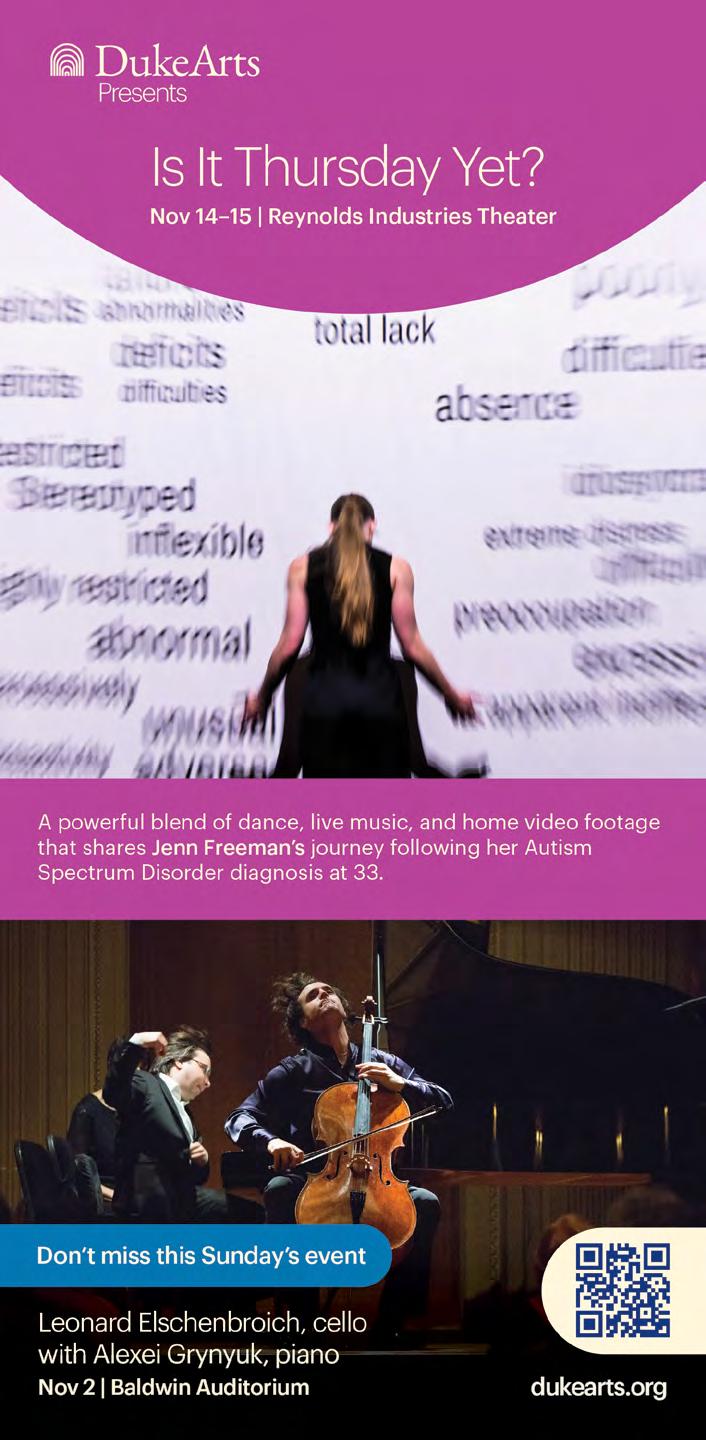
From reader ANDY LOWE by email:
I am a Durham resident and current renter of my home who is concerned about good intentions turning into disastrous policy.
I have great sympathy for those stuck with slumlord landlords who abuse their ability to charge rent without providing suitable housing. Durham is right to consider solutions. My concern is this specific solution seems to leave open a large opportunity for abuse. No specifics have been given for when a property becomes “unsuitable” following loss of a key component, and rent isn’t due for a particular month(s). Rentals (such as my own) that lose heat or other key components (potable water, electricity, etc) are typically treated as emergency repairs. Will a landlord lose rental income even if they respond appropriately to an emergency repairs request? What is the appropriate response time?
These questions must be answered before this ordinance becomes law. If not made clear, the inevitable abuse will inject additional cost into the rental housing market as landlords have to insure against such abuse or even sell to larger property management companies that can accept such risk (and also pass this cost to renters).
Renters deserve to get what they pay for from their landlords. We don’t need to invite abuse over broken toilets to improve that. I would encourage those who speak to council members supporting this ordinance to ask about implementation. As a lawyer I’d hope council member Cook would know the details. We need not pass bad policy for good reasons.
In September, Chloe Courtney Bohl wrote about how WRAL is managing headwinds in the local TV news industry. We got lots of feedback, including from a retired station manager.
From reader JIM ROTHSCHILD by email:
As a former employee of Capitol Broadcasting, I read your recent article with great interest.
WRAL has been and still is a one-of-a-kind in local broadcasting. Unfortunately in reporting on the recent changes, you have failed to fully recognize how this leader in the industry stands out compared to virtually every other local station in the country. You focused on comparing it to itself and its history without acknowledging how it compares to the rest of the industry.
Have the changes in the media landscape forced WRAL to make difficult decisions related to staffing and resources? Yes. But if you look at who they are today and how committed they are to continuing to be THE premier local broadcast station in the country, you will find they are still in a league of their own.
Show me any station in the country that hasn’t been forced to cut deeply into their operation to meet financial challenges. Then show me any station that matches WRAL’s level of resources committed to local, regional, national stories, to a full time award-winning documentary unit, to a industry-leading staff of meteorologists, to staffing one of the largest digital local news teams anywhere, to a 24-hour multi-platform news channel, to a decades-long commitment to local high schools sports, to on-going support of community projects and events, to leading the broadcast industry in technological advances, and most significantly, to taking extraordinary care of the people of CBC that make it all work.
Jimmy Goodmon took over the extraordinary legacy of this station at a time when the tectonic plates of media were shifting dramatically and rapidly. He understood the challenge, and with his team, works every hour of every day to ensure that WRAL remains a leader in this community and in broadcasting. With that comes many difficult choices and
decisions. Like every other station, and frankly every company in the country, WRAL faces changes and the challenge of how to deliver the best product possible in light of the changes. That can be hard.
However, what doesn’t change at CBC under Goodmon is the commitment to serving this community and being the premier local media company in this country.
What I regularly tell people, and frankly your article missed, is there is no other station like WRAL and no other media owner like CBC … anywhere.
In September, former school board member Steve Unruhe wrote an op-ed urging Durham Public Schools to start planning new uses for the old Durham School of the Arts site. A former city council member shared his perspective.
From reader EUGENE BROWN, who served on the Durham City Council from 2003 to 2015:
For several reasons, I was very much opposed to abandoning the former Durham High School, which now houses the Durham School of the Arts. As the INDY also highlighted, to order pay for a new high school, crucial renovations that had been put on hold for years, including in elementary schools with majority Black students, were once again ignored. Yet, the Durham School Board, in spite of growing budget deficits, were inculcated with the, “newness is goodness” syndrome, and charged ahead.
And now, to his credit, Steve Unruhe, a former school board member and whose defeat in 2020 was a major loss to Durham, has the foresight to address the now almost forgotten issue of, “what’s next” for these historic landmark buildings and their 17- acre campus.
As Steve points out, two years from now, when the new school is completed and the last school bus has pulled out of DSA, is not the time for this discussion. Perhaps with the assistance of a community engagement firm, with local appointed members, consensus for usage will emerge, but the important issue is our planning should begin now.
Steve makes five suggestions, all of which are insightful and worthy of our consideration. To that I would add, in his words, something “fabulous and amazing” for the highest and best usage for this site.
With the help of NC Preservation Society, which has assisted other communities throughout our state, renovate the main building into affordable housing for those who too often have been left out of Durham’s booming housing market … our teachers, fire fighters, police officers and first responders. Indeed, we can even call the development, condo maximums! What a fitting tribute to those who have give their maximum on a daily basis to serve our beloved community.
On the heels of Founders’ Day, a Duke student organizer argues that the university’s Black, brown, immigrant, and low-wage workers should be the ones honored.
BY ARTIVISTA KARLIN backtalk@indyweek.com
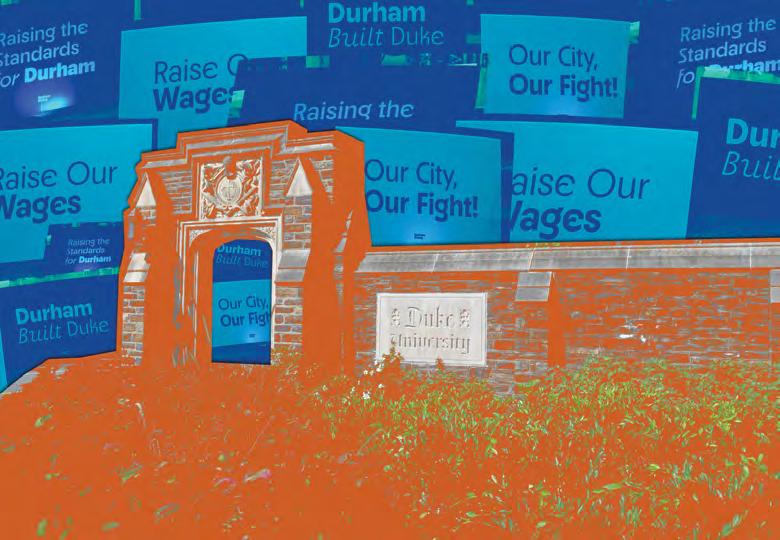
Every fall, Duke celebrates Founders’ Day with pomp and ceremony, honoring the industrialists whose names adorn our buildings and whose legacies have shaped our campus narrative. But as I walk through the hallowed halls of Perkins and Rubenstein Libraries, I see a different story: one that our official celebrations consistently overlook.
The real founders of Duke University aren’t the wealthy benefactors whose portraits hang in the Gothic Reading Room. They are the generations of Black, brown, immigrant, and low-wage workers whose names we may never know but whose labor laid every brick, maintained every lawn, and served every student and faculty member for over 100 years.
A new coalition, Durham Rising, reminds us that it is the people of Durham who make Duke run. Public educators teach our children. Graduate students lead classes and conduct groundbreaking research. Nurses care for patients at Duke Health System. Service workers keep campus facilities clean and functional. City workers maintain the infrastructure that we all use.
As the largest employer in Durham County, Duke has a huge responsibility to protect and invest in the workers and families who keep our university and community running. This means protecting jobs, improving pay and labor standards, investing in public infrastructure, and supporting Durham’s public schools. Duke’s own mission statement commits the university to “contribute in diverse ways to the local community.”
Yet Duke’s current leadership seems more interested in appeasing billionaires who care more about investment returns than our quality of life. While Duke sits on a nearly $12 billion endowment, workers and students across campus struggle to make ends meet on wages that don’t match Durham’s rising cost of living.
This disconnect is even more concerning in our current political moment. The Trump administration threatens to cut funding streams that support universities while passing historic tax breaks for billionaires. President Trump spoils his wealthy friends at the top while reducing access to health care and food assistance for working families. Now,
“Duke and its Board of Trustees face a critical choice: Will they prioritize supporting working families in Durham, or will they stand aside and let billionaires get richer while workers suffer?”
Duke and its Board of Trustees face a critical choice: Will they prioritize supporting working families in Durham, or will they stand aside and let billionaires get richer while workers suffer?
But Duke is folding in the face of political pressure and cutting the jobs our community relies on. This approach betrays both Duke’s stated values and the workers who
have kept Duke running for over 180 years. Duke’s proposed and enacted layoffs impede our experience as students. These layoffs affect the workers we interact with every day—in dining halls, dorms, and classrooms. Laying these folks off means getting rid of members of our Duke family. Take Luis, for example, a beloved bus driver who was fired from Duke when the Trump administration terminated Temporary Protected Status for Hondurans. Students and community members were so distraught to see Luis go that 500 of them spoke out to share their support. Workers like Luis need us right now—and we all need Duke to stand up against the administration’s cruelty and bullying.
The Durham Rising coalition has articulated clear demands for Duke to live up to its potential as a community partner. We need dignified work with $25-per-hour wages, fair labor standards and benefits, and respect for workers’ rights to organize. We need Duke to hold contractors to these same standards rather than allowing them to exploit workers while profiting from university contracts. Most importantly, Duke has to protect students, faculty, workers, programs, and services amid federal funding cuts, threats to freedom of speech, and deportation threats. This moment is frightening for students and workers alike. Duke has a responsibility to stand with us and fight back.
This Founders’ Day, I call on Duke University to honor its true founders by standing with the working people who built this institution and continue to make it great. We show up for Duke every single day. We deserve a Duke that shows up for us. W
Artivista Karlin studies international comparative studies at Duke University and is an organizer with the campus chapter of the Sunrise Movement.

MAYOR
LEONARDO WILLIAMS
DURHAM CITY COUNCIL, WARD 1
MATT KOPAC
DURHAM CITY COUNCIL, WARD 2
SHANETTA BURRIS
DURHAM CITY COUNCIL, WARD 3
CHELSEA COOK
CHAPEL HILL MAYOR
JESS ANDERSON
CHAPEL HILL TOWN COUNCIL (VOTERS SELECT UP TO 4)
CAMILLE BERRY
PARIS MILLER-FOUSHEE
LOUIE RIVERS III
WES MCMAHON

TOWN COUNCIL, AT-LARGE
CARISSA KOHN-JOHNSON
TOWN COUNCIL, DISTRICT A
BRITTANY RICHARDS
TOWN COUNCIL, DISTRICT C
BELLA HUANG
CARRBORO MAYOR
BARBARA FOUSHEE
CARRBORO TOWN COUNCIL (VOTERS SELECT UP TO 3)
DANNY NOWELL
CRISTÓBAL PALMER
CHAPEL HILL-CARRBORO CITY SCHOOLS BOARD (VOTERS SELECT UP TO 3)
GEORGE GRIFFIN
RIZA JENKINS
MELINDA MANNING








Election Day is November 4 in municipalities across Durham, Orange, and Wake Counties. Polls will be open from 6:30 a.m. to 7:30 p.m. on Election Day.
Early voting ahead of the election ends on November 1 at 3 p.m.
You can look up early voting sites, Election Day polling places, and sample ballots at ncsbe.gov
In Durham, voters can cast ballots in all races regardless of the ward in which they live.
In Cary, voters who live in District A or C can vote in those respective races; all Cary residents can vote in the at-large race.
Check out all of the INDYʼs 2025 election coverage, find candidate questionnaires, and read our full endorsements at indyweek.com/elections indyweek.com/elections






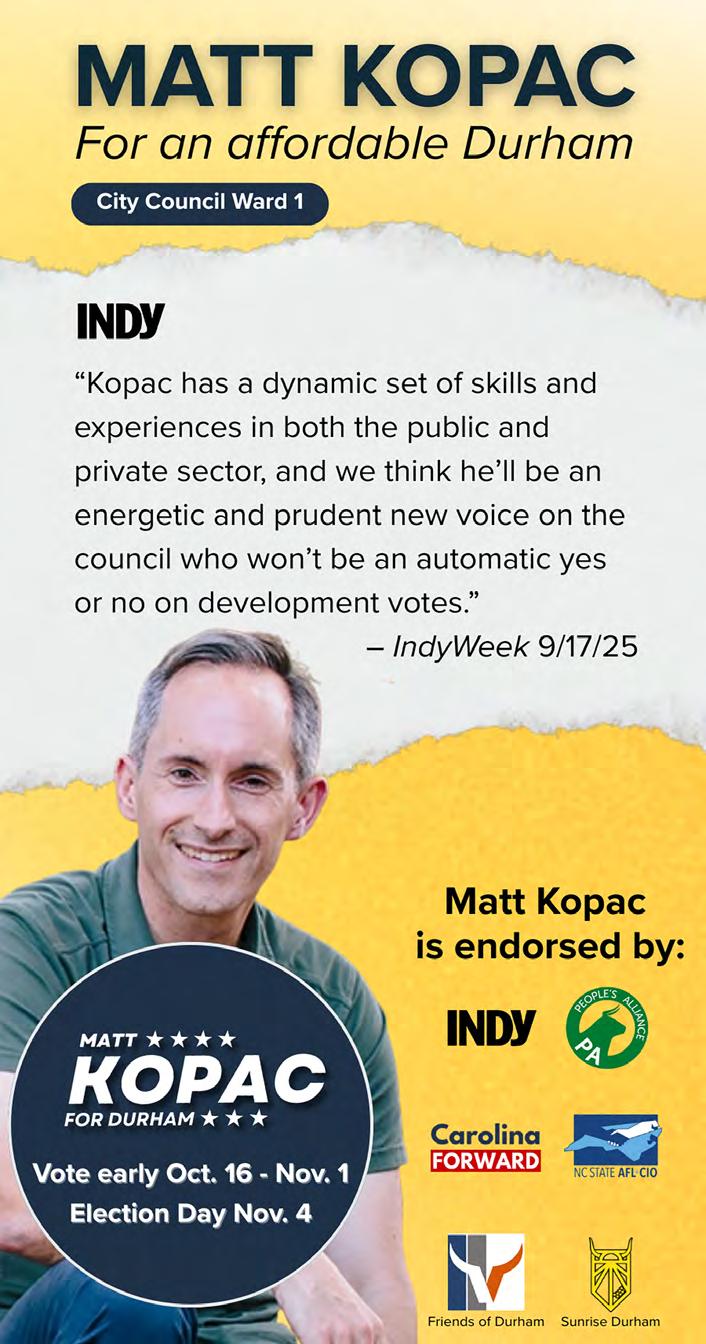



Twenty years in the making, the trail—along an inactive railroad corridor stretching from downtown Durham to Avondale Drive—is expected to open in 2028.
BY KENNEDY THOMASON backtalk@indyweek.com
More than seven years after the City of Durham bought an inactive railroad corridor with plans of turning it into a trail, the Durham Rail Trail is in its final stages of design.
The Durham City Council heard a presentation at a work session earlier this month on the project timeline and amenities, and public art that will be found along the 1.8-mile trail. Construction is set to begin January 2027, with the trail opening to the public June 2028.
The trail will run from “the area around Avondale Drive and Trinity Avenue to just northeast of the Durham Amtrak Station at West Chapel Hill Street, forming a crescent around downtown Durham,” according to the city’s website. The project is projected to cost $45.3 million.
The rail trail is 20 years in the making, something Councilor Carl Rist is mindful of.
“I think it’s pretty clear we were here about a year ago, since then, the timeline’s also been pushed back another year, so we’ve gotta deliver this thing,” Rist said. “We gotta do it soon.”
Since a schedule for the project was presented to the council last year, the timeline was pushed back six to nine months to further evaluate costs and ensure they remain within the budget, said Henri Prosperi, the city’s project management division manager.
The rail trail is on track to submit 90 percent complete designs to the North Carolina State Department of Transportation in March 2026.
The project will incorporate Durham’s goal of creating renewable energy in city operations through creating a 52 percent increase in households with access to a park by bike or foot, said Iona Thomas, the chief growth and strategy officer for McAdams, a planning, design, and engineering firm.
This is only one item that is designed to attract residents, she said.
Sitting alongside the trail downtown, a proposed Gateway Plaza will include micro retail, a flexible plaza space, native plants, and public art. The plaza would be located between the Durham Amtrak station and the downtown
loop, where there is currently a gravel lot. The plaza would serve as a connection between the Durham bus station and downtown, which is slated for several redevelopment projects in coming years. The trail will also connect to the Ellerbe Watershed near Trinity Avenue.
Public art for the rail trail will include the Stagville Memorial Project, a nod to the more than 900 people who were enslaved at the Stagville plantation from 1771 to 1865.
At the work session, council member Chelsea Cook said they have some concerns the rail trail could lead to gentrification or other unintended effects on residents near the site.
“I do want to ensure that as we’re working on this project, we’re thinking about the real impacts on people who actually live in Durham, and whether we’re building a place for those folks or building a place for others we’d like to displace them with,” they said.
Nia Rodgers, a project manager for McAdams who has been involved with the rail trail since 2017, said many low-income residents were already gone by the time her team canvassed the surrounding neighborhoods several years ago.
“The train may have already left the station,” said Rodgers, who helped draft the project’s equitable engagement blueprint and knocked on doors when it was time for community input. “But it doesn’t mean that we can’t change things.”
The rail trail was formerly named the Durham Beltline, which drew inspiration from the Atlanta Beltline, a 22-mile trail. The trail in Georgia’s capital has caused property values to soar and residents to be displaced, generating concerns of gentrification.
Mayor Pro Tem Mark-Anthony Middleton said it is never excessive to talk about equity in Durham but the city is “so committed to the equity piece” of the rail trail that the timeline has lagged partially because of community engagement.
“I think the prominent place of Stagville in this project is a direct result of our equitable engagement to make sure that all of the voices and colors and stripes of Durham are prominently, perhaps the most prominent place along this trail… has been left to the descendants of those that were formerly enslaved,” Middleton said. “That’s because we spoke to the community.” W

With the support of a new PAC and a considerable donor base, candidates Bella Huang in Cary and Sue Mu in Apex could join a small but growing roster of Asian American elected officials.
BY JANE PORTER jporter@indyweek.com
Bella Huang, a candidate for Cary’s District C town council seat in the municipal election this fall, tells a story about her son’s piano teacher who lives close by and is supporting Huang’s campaign with a sign in her yard.
Huang says the musician, a “strong Trump supporter,” surprised neighbors with the yard sign for Huang, a Democrat in an officially nonpartisan race (Huang’s opponent, Renee Miller, is active in the local Republican Party). It’s just one example, Huang says, of how she’s been able to build bridges with a diverse electoral base and head into early voting as the top fundraiser out of all six candidates running in Cary this cycle. She’s reported a haul close to $100,000, according to the most recent filings available, $30,000 ahead of the next most-moneyed candidate.
“She supports her values, that is totally fine,” Huang says of her piano teacher neighbor. “But for the local election, she’s just known me so many years, and she knows that
I’m a good person, and I really care about everyone, so she supports me no matter what. It makes me very proud to share this story.”
Huang is one of two Chinese American candidates running strong campaigns for municipal seats in western Wake County. The other is Sue Mu, who is running for one of three open seats on Apex’s town council. Mu, as well, is leading in a pack of eight contenders in fundraising, netting close to $68,000, nearly four times that of her closest competitor.
“We’re out there, talking to the voters, talking to neighbors, attending all sorts of events to learn what our residents care about, what their concerns are, and what the government can do better,” Mu says of her campaign.
It’s no coincidence that Huang and Mu are making waves in local elections this year. Both have the weight of the Margin of Victory Empowerment Fund, a political action
committee known as MOVE NC, behind them. MOVE NC is dedicated to encouraging political engagement among Asian Americans and championing Asian American candidates; Huang and Mu have been able to tap into a considerable donor base associated with the PAC.
They also have role models, including former Chapel Hill Town Council member Hongbin Gu and state representative Ya Liu, a former Cary Town Council member, who ran successful campaigns Mu and Huang say they’re learning from. Gu and Liu are two of the first Chinese Americans to hold elected office in North Carolina.
Finally, they have the support of many in a small but growing Chinese American population in Wake County, the Triangle, and the state more broadly—residents and voters who have been galvanized to fight back against the anti-immigrant rhetoric of President Donald Trump and, specifically, the anti-Chinese sentiment that followed the outbreak of the COVID-19 pandemic.
“I know that people I’ve spoken to were very concerned about [anti-Asian sentiment], and rightfully so,” says Shruti Parikh, the director of education and political engagement at North Carolina Asian Americans Together (NCAAT), a nonpartisan, nonprofit group that works to foster civic engagement and political participation among Asian Americans in the state (NCAAT also has a separate lobbying arm, NCAAT in Action). “And so, they mobilized. They created their [MOVE NC] PAC, which allows them to work together
to ensure that their interests are funded.”
But it’s taken a while—at least a generation—to get here.
North Carolina’s Chinese American population, which represents about 15 percent of the state’s overall population of Asian American Pacific Islander (AAPI) residents, began growing in the 1990s and continues to grow (see chart), according to census and American Community Survey data.
As of 2023, North Carolina is home to more than 360,500 AAPI residents, including more than 52,000 residents of Chinese origin. Most Chinese American residents— about 45 percent collectively—live in Wake, Durham, or Orange Counties, with the largest population (around 14,000) residing in Wake County (see chart).
Parikh says she doesn’t see that growth, or the community’s involvement in the political process, slowing.
“I’m talking to more and more Asian Americans across the state, and from different Asian American backgrounds, that are interested in running for office,” she says. “They see that others have blazed that trail ahead of them, and they know that with that success, that means that they can also bring their community’s interests forward and make sure that they have a seat at the table as well.”
In 1882, the national Chinese Exclusion Act specifically barred Chinese laborers from immigrating to the United States and blocked Chinese immigrants from becoming U.S. citizens. Later, the U.S. Immigration Act of 1924 instituted four decades of racist national origin quotas that limited immigration from Asian and African nations. But in 1965, President Lyndon B. Johnson signed the Immigration and Nationality Act, ushering in a new era that saw the quotas erased, skilled immigrants prioritized, and family reunification as a basis for immigration emphasized.
By the 1980s, North Carolina and the United States as a whole began to see increased migration from non–Western European nations, according to Nathan Dollar, the executive director of Carolina Demography at UNC-Chapel Hill. During the 1980s through the 2010s, he says, some 70 percent of all immigrants to the United States, and North Carolina, came from Latin American and Asian countries.
Of the AAPI communities, Indian Americans, who comprise the largest subgroup of Asian Americans in the state, quickly became the most politically organized, founding a nonpartisan PAC—NC-INPAC— three decades ago, according to Parikh. They’ve secured leadership positions within the state Republican and Democratic Par-
ties, and Indian Americans, such as Morrisville Town Council member Steve Rao and state senator Jay Chaudhuri, have seen widespread electoral success at the state and, especially, local levels.
This election cycle, several Indian American candidates are running for seats on the Morrisville Town Council, including for mayor. People of Indian descent make up a majority—some 40 percent—of Morrisville’s population. Additionally, AAPI candidates are running for local office in Apex (in addition to Mu) and Wake Forest this cycle.
Gu, a former Chapel Hill Town Council member who was elected in 2017 and one of the founders of the MOVE NC PAC, recalls moving to the United States in 1994.
“When I arrived in this country, there weren’t really any Chinese or Asian organizations,” Gu recalls. “So it took a long time for us to gradually reach … the point that we are now in.”
Gu says community organizations slowly began to come together for Chinese American residents in the Triangle, including the Chinese-American Friendship Association (CAFA), a nonprofit cultural exchange group founded in 1996, and the Chinese School in Cary, founded in 2003. Events such as Chinese New Year galas and Cary’s Chinese Lantern and Taste of China festivals brought Chinese American residents together and facilitated connections between Chinese immigrants and the wider community.
On the state level, Asian American nonprofits, such as NCAAT, which formed in 2016, and various PACs such as NC-INPAC, existed to foster civic engagement and mobilize AAPI voters. It was a massive effort, explains Parikh. Following its formation, an NCAAT survey found that 80 percent of Asian Americans said they had never been contacted by either party in an election.
“And so we set out to bridge that gap,” Parikh says. They phone banked, knocked on doors, set up a hotline, and sent out mailers in eight different languages (there are between 20 and 25 spoken in the state’s AAPI community).
“In every election since 2016 we have worked hard to make sure that Asian Americans are increasingly aware of what elections are being held that year,” Parikh says. “The rise in [voting] numbers definitely shows that our engagement has been successful.” (In the 2024 general election, 92,886 “Asian” voters cast ballots, according to NC Board of Elections data; in the 2020 and 2016 general elections, those numbers were 75,060 and 51,516, respectively.)
It was around 2016, after Trump’s election, that Gu says it began to crystallize for her that, along with community organi-
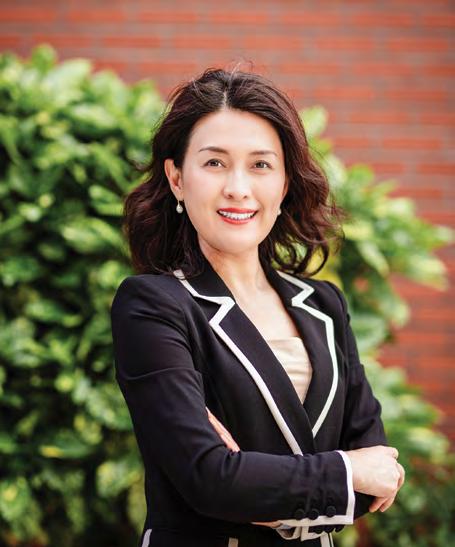

zations, Chinese Americans in the Triangle needed a political voice.
“We came from a country that does not have the democratic system, so we know how important it is,” Gu says. “So we are just willing to put in our efforts, our resources, to make sure that we’re working together with other community members and others who believe in this vision for America.”
Gu was elected to Chapel Hill’s town council in 2017, the first person of Chinese American heritage elected in North Carolina’s history. Then, in 2019, Ya Liu was elected to Cary’s town council. In 2022, Liu was elected to the state house, in District 21 representing western Wake County, with 68 percent of the vote. She is the first Chinese American elected to a North Carolina legislative seat, and, along with Wake County representative Maria Cervania, who is of Filipino descent, one of two of the first Asian American women to serve in the legislature.
In 2023, Liu, Gu, Bella Huang, and a group of Chinese Americans living in the Triangle, launched MOVE NC. The PAC’s name came to Gu while she was running in the woods one morning, she says. While Asian Americans make up a small number of voters, she reasoned, so many elections across North Carolina, at all levels of government, are decided by small margins.
“If we can encourage more people from the Asian American communities to get
involved—do our voter registrations and education seminars and lots of trainings and make sure that people understand the issues, how important they are to their daily life and to their children, to the community—we can make a difference,” Gu says.
In addition to supporting Asian-American candidates and other candidates who share the PAC’s values—MOVE NC has fundraised for NC governor Josh Stein, attorney general Jeff Jackson, and lieutenant governor Rachel Hunt in past election cycles—MOVE NC also lobbies for and against legislation, in North Carolina and elsewhere, that impacts their communities.
Discriminatory laws in states like Florida ban Chinese nationals from owning property. North Carolina lawmakers filed a similar bill this session targeting Chinese citizens in an attempt to prohibit them from owning property, which MOVE NC has opposed (the bill is currently stalled in the state house).
Despite an emergent open hostility toward immigrants in the U.S. following Donald Trump’s reelection, the Asian American community isn’t a political monolith.
“There has been a rise in Asian conservatism, and we saw an influx of that with misinformation and disinformation on WeChat channels last year,” says Parikh of NCAAT. WeChat, similar to What’sApp, is used widely in Chinese communities. “I think that might be another contributing factor
Huang says, government services are another important concern.
“We care a lot about the parks, community centers,” she says. “Can we have enough pickleball or other community programs for us?” And, she adds, “people here will be a little bit worried about the increasing cost of living and increasing price of housing— which is not only in Asian American communities, it’s the whole community that’s worried about it.”
In Apex, Mu is more up front about her political affiliation. She’s running on a slate with two other Democrats—candidate Shane Reese and incumbent mayor pro tem Ed Gray—all three of whom have been endorsed by the county Democratic Party. Mu is also up front about the difficulties of running as an Asian American candidate. She says she’s received harassing comments directed at her and her campaign, mostly anonymously online.
to why you’re seeing Chinese Americans running on a more progressive platform.”
Bella Huang and Sue Mu are two candidates trying to make a difference, and they have a lot in common. Besides being Chinese American women and MOVE NC PAC members—Mu is PAC chair and Huang, a co-founder, serves on the executive board—they’re both small business owners, working mothers, and community volunteers.
But, while bankrolled by many of the same donors, they’re running different races.
In Cary, as Huang’s story about her piano teacher might suggest, District C is one of the town’s older and more conservative districts. Although endorsed by the Wake County Democratic Party, Huang hasn’t made much of her party affiliation this election cycle.
“I just joined the Democratic Party when I registered my driver’s license at the DMV,” she tells the INDY
Huang says the issues voters care about, including Cary’s Asian American residents, who make up slightly more than 20 percent of the population, include education— having good schools for their children and housing for teachers so they can afford to live in the town.
“We don’t have enough teachers, and I think that is one big issue,” Huang says. For the Asian American community,
“Because I’m an immigrant and woman of color, some people … make nasty comments about my campaign … questioning my qualifications,” Mu says (she holds a bachelor’s degree in chemical engineering and an MBA in finance). “They never asked any other candidates, only me, ‘Where were you raised and born?’ Recently, some people even left a comment [on a social media post about early voting], ‘Are you a U.S. citizen?’” Mu released a statement on October 6 addressing the comment.
“These experiences only strengthen my resolve to keep bringing people together with respect, compassion, and courage—to make our country stronger and ensure Apex remains a welcoming home for everyone,” she wrote. “I’m running to serve, unite and empower all residents of Apex.”
Since then, Mu received about 45 more donations, she says, with 38 of those coming from Apex residents (those donations will be reported in the upcoming campaign finance filing period, posting before Election Day). Mu says she was heartened to see Apex residents stand up for her.
“They defended me,” she says. “Those nasty comments, and people behind those comments, are rare. Most Apex residents … are friendly. They appreciate how our immigrants can contribute to this country, how much we do, and they appreciate we are … hardworking people who contribute. So I feel touched.”
Mu says, if she gets elected, she’ll try her best to make Apex a welcoming place for everyone, “regardless of your skin color, regardless of who you love, regardless of which ethnic group you belong to.”
“It’s the best place. I love Apex so much,” Mu says. “There’s no other place I’d rather call home.” W
Transit advocates have long sought twoway conversions of Roxboro and Mangum Streets in Durham. With funding in the city budget and design concepts in the works, the project is moving forward.
BY JUSTIN LAIDLAW jlaidlaw@indyweek.com
Design concepts were unveiled last week for a project to convert Roxboro and Mangum Streets into twoway traffic.
It’s a big step forward in addressing two dangerous streets in Durham, and one of transit advocates’ top priority projects for reducing road deaths and injuries.
The Roxboro Street portion of the project stretches from Lakewood Avenue on the south side of downtown to I-85 on the north end. The Mangum Street portion also starts at Lakewood but ends at Markham Avenue. Construction is expected to begin in 2027. This year’s budget includes $1.2 million from the city’s Capital Improvement Plan to move forward on the design process, but total costs are still unclear (traffic lights can cost hundreds of thousands per signal, and other material costs could fluctuate based on tariffs and other national trends).
Based on designs shared at an open house last week, reconfiguring Roxboro and Mangum wouldn’t require a ton of major construction. Large design renderings showed two-way traffic patterns, intersection redesigns with new stoplights to help control speeds, and curb adjustments for essential vehicles like fire trucks and buses. Attendees used sticky notes to leave comments or suggestions like “protected bike lanes” and “roundabouts.”
Attendees at the open house pointed out key areas like the downtown Durham library, where five lanes of one-way traffic make it challenging for some residents to cross the wide intersection on foot quickly and safely. Overall, folks who attended the open house said the two-way conversion seemed “simple” and a “no-brainer.”

But while converting to two-way could reduce speeds and provide additional safety, advocates continue to push Durham’s transportation department and the North Carolina Department of Transportation (NCDOT), which owns the roads, to include more bike and pedestrian infrastructure within the reconstruction project.
“I think [the designs] are a minimal improvement at best,” says Scott Mathess, a Durham resident and avid cyclist who co-organizes the school “bike train” group ride in his neighborhood. “I don’t think it’s going to make things easier for pedestrians or cyclists downtown. It doesn’t add anything to bike infrastructure. It doesn’t add anything to pedestrian infrastructure.”
Converting both roads back to two-way routes would be a return to the Durham before urban renewal cleaved Hayti from downtown, like the program did in cities nationwide in the 1950s and 1960s. A hundred years ago, not only could you drive in both directions up and down Mangum Street, but Durhamites could catch a streetcar bustling through the middle of the road.
The sections of Roxboro and Mangum that would be reworked still cut through the heart of downtown Durham, but in the last two decades, residential homes have proliferated along most of the route. Some have staked signs in their yards that read “slow down” or “children at play.” Safety is a major concern for residents along the corridor, particularly for families of young children who are terrified by the breakneck speeds of cars whizzing by in the 35-mileper-hour zone.
A traffic analysis study of the project area prepared for
the city showed that between 2018 and 2023, Roxboro Street incurred 748 total crashes, while Mangum Street saw 434 crashes. Only a small percentage of crashes involved pedestrians and cyclists, but that could be due to a low volume of travelers along the corridor using those methods due to safety concerns. The study also suggested that two-way conversion would “result in an overall acceptable level of service at all the study intersections” even during peak traffic hours.
Advocates say corridors like Roxboro and Mangum, and the nearby Duke Street and Gregson Street one-way pairing, are dangerous for pedestrians and motorists alike. John Tallmadge, executive director of Bike Durham, views the Roxboro-Mangum project as a symbol of Durham’s commitment to reaching its goals for Vision Zero, a multinational movement to reduce traffic deaths and serious injuries.
“Roxboro-Mangum is really a test case for whether there’s a commitment to make physical design changes to some of our busier, dangerous streets,” Tallmadge told the INDY in May during Bike Month. “It feels like if they back away from this project, we don’t have a lot of confidence that they’ll take on the other projects. They’re all going to be hard. They’re all going to be bigger-dollar projects. So we think it’s important they see that through.”
Durham will ultimately need sign-off from NCDOT before any construction begins. The state passed its own Vision Zero resolution a decade ago, and in its most recent strategic plan, NCDOT laid out key metrics for meeting its Vision Zero goals: 50 percent reduction in the number of
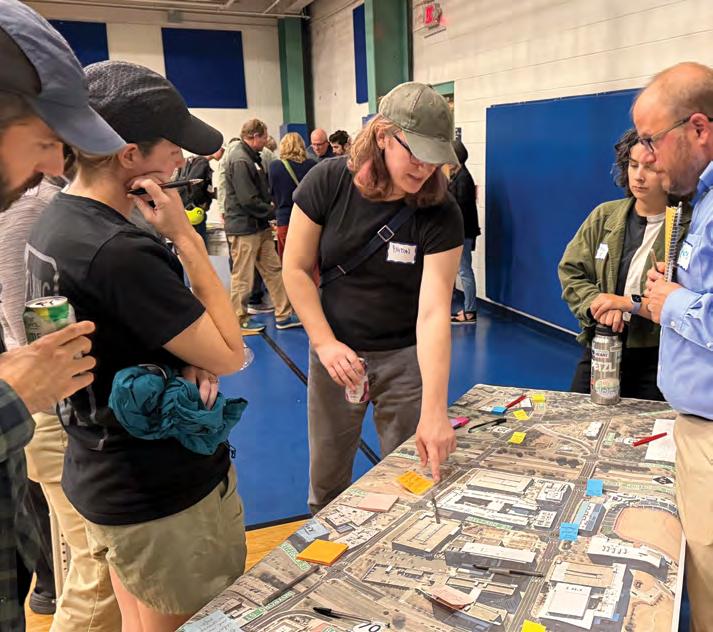
fatalities on public roadways by 2035 and 100 percent by 2050. Transportation advocates like Mathess and Tallmadge say the state should allow local municipalities like Durham to pursue major road reconfigurations if they are serious about hitting the mark on Vision Zero.
As Durham continues to prioritize density and sustainability inside the urban core, city transportation and planning staff, as well as transportation advocates, are pushing ways to de-emphasize single-occupancy vehicles in favor of public transit, biking and walking. In larger cities, teens and young adults forgo a driver’s license because other transportation options are easier and more accessible. Mathess says that his daughter and her friends are continuing that trend even in places like Durham, and that local officials should take note and plan for future generations.
“Up to now, we’ve been building a city for boomer culture and our grandparents and their parents,” Mathess says. “What we need to do is start rebuilding the city for our children and their children. Our children don’t want to drive everywhere. We need to start working on cities that are safe to walk, safe to bike, and laid out for public transit. Individual personal automobiles are on their way out, yet we continue to try to build for them, and that is a mistake. Now is the time. I mean, 20 years

ago was the better time, but right now is the next best time.”
Roxboro and Mangum isn’t the only corridor being considered for a redesign. Public engagement is currently under way for Duke Street and Gregson Street, another state-owned one-way pair where many injuries occur. The city is also looking at updating traffic patterns on a number of stateand city-owned roadways when those roads are resurfaced and repainted throughout the next year. During the resurfacing process, the transportation department could choose to paint in new bike lanes or other markings that don’t require additional construction, saving money while also moving toward larger transportation goals.
“We’re trying to move things along with urgency, but we are working within NCDOT’s parameters and essentially trying to bring them along with us,” says Lauren Grove, Durham’s Vision Zero coordinator.
“It sets a precedent for other conversions or other state-owned roads and how we address safety improvements on some of those bigger arterials, like on Duke and Gregson, like Holloway and Fayetteville, where we’re hoping to turn those into transit emphasis corridors and make improvements. All of these are state-owned roads, and so we’re really trying to make improvements in a system that we don’t really have the ultimate say in.” W


Frontrunners for Wendell’s board of commissioners seats have different visions for how to manage the town’s booming population.
BY CHLOE COURTNEY BOHL chloe@indyweek.com
Many Wendellians—including several of the eight candidates running for three seats on the town board of commissioners—tell a similar story about what attracted them to the small but growing eastern Wake County town.
“Once I saw the geographical area, I was like, ‘This is exactly where I want to start and raise a family,’” says BJ Barham, a first-time candidate and the frontman of American Aquarium. “We found a 1938 Dutch colonial in the middle of downtown Wendell … and we moved into a really amazing neighborhood. To be able to be 10 miles from the epicenter of one of the fastest-growing cities in America and still feel so far removed from it just [by] driving 15 minutes east, it’s a beautiful best-of-both-worlds situation.”
Candidate Dustin Ingalls also moved to Wendell to put down roots.
“Four years ago, I was living in downtown [Raleigh] with roommates, renting, and I was 36,” Ingalls says. “And I started thinking, ‘What would it take to buy a house? Can I afford it?’”
In Raleigh, the answer was a resounding no. So he ventured farther afield.
“I was like, ‘Oh, this is a cute little downtown. The vibe here is all local businesses. There’s no chain restaurants to be seen.’ This felt like a place I could be,” he remembers. “Also, the house was affordable—that’s the main part.”
Barham and Ingalls may both have been wooed by Wendell’s small-town charm, but from there, their paths to local candidacy diverge.
Barham, a Democrat, is running as part of what he calls a “unity ticket” with Republican former commissioner Phil-

ip Tarnaski and unaffiliated candidate Kate Benson. Their slate is generally skeptical of Wendell’s recent growth— the town’s population has almost doubled in the last five years to over 17,000, making it one of the fastest-growing municipalities in the nation—and believes the board of commissioners should be more selective in approving new development. Barham’s entry into local politics was as a neighborhood advocate, arguing against the development of eight three-story townhomes across the street from his historic home (he and his neighbors were unsuccessful and the property was rezoned earlier this year).
“We live in one of the fastest-growing towns in one of the fastest-growing counties in America. It would be naive to think that growth is not coming,” Barham says. “I would like to see the high-density townhomes and apartments not entering into established neighborhoods, not entering into our historic district …. We do need to address infrastructure, schools, medical facilities. We need to worry about revitalizing our downtown.”
Barham says the past decade has been marked by “growth for the sake of growth” in Wendell, with the board of commissioners “rubber stamping” developments that don’t benefit current residents.
Ingalls, the director of North Carolina political programs for the Environmental Defense Fund and a former political consultant, is more inclined to embrace the growth. He points out that new tax dollars can be reinvested into local businesses, infrastructure, and the economy, and that building more densely in the heart of Wendell helps to preserve forested area and farmland at the town’s edges.
“A lot of people think that historic preservation and growth are incompatible, that you pave over paradise when you grow,” Ingalls says. “But in some ways you need growth—need population and tax base growth—to maintain your history.”
“I moved here largely because I couldn’t afford to live in Raleigh, and fell in love with the town, and I want to be a part of shaping it for years to come,” he adds. “But sometimes I feel like people would have shut the door in my face if they could have.”
Barham and Ingalls aren’t the only candidates talking about Wendell’s growth—it’s the animating issue of this election, with implications for housing affordability, infrastructure, and the future of downtown. It’s not a question of whether Wendell will continue to grow, but how.
“Our role as a local government is to respond to and manage that growth in a way that is additive to the town, additive to our community,” says Deans Eatman, deputy secretary at the NC Department of Natural Resources, a first-term commissioner, and the only incumbent in the race (two other commissioners, Jason Joyner and Jon Lutz, are not seeking reelection). “A high-level growth philosophy that I have is, if you’re going to have growth, it should happen in places where it’s connected, and there are amenities like downtown business districts, wastewater systems, stormwater systems, transportation infrastructure.”
Since Eatman was elected in 2021, the board of commissioners has adopted a new comprehensive plan, created a downtown social district, funded a new community center and competitive pay adjustments for town staff,

adopted a nondiscrimination ordinance, and begun requiring developers to have community meetings during the rezoning process.
Eatman pushes back against Barham’s “rubber stamping” characterization: “There are a ton of growth and development proposals that get brought to our staff and either never see the light of day or look so unrecognizable by the time that they do,” Eatman says. He, along with Ingalls, is endorsed by the Wake County Democratic Party.
Like Barham, Benson and Tarnaski are campaigning for “responsible growth that honors our roots,” as Benson phrases it on her website. She tells INDY that Wendell is “not asking [developers] to do as much as we want them to” and has “made it way too easy to pop up a neighborhood, and then ask the DOT [Department of Transportation] to handle” the resulting traffic.
Tarnaski puts it more bluntly: “All we have here right now is high density,” he says. “There’s no room. Everything’s on top of each other … [and] it hasn’t made the price go down.”
U.S. Census Bureau data confirms that permitting for new housing in Wendell has spiked in the last decade, from 19 units authorized in 2013 to 1,054 authorized in 2023, the most recent year for which data is available. But single-family development dominates the market: of the 4,566 units authorized in that 11-year span, 3,651 were single-family and 915 were multi-family.
Barham, Benson, and Tarnaski are campaigning energetically as a unit. Barham says the fact that he and his running mates aren’t taking money from develop-
ers reflects their commitment to regular residents of Wendell. Barham has raised about $4,300 this election, while Benson has raised about $1,300. Tarnaski doesn’t expect to raise more than $1,000 so he hasn’t reported any donations.
“I think a lot of people are excited that I’m not a career politician,” Barham says. “I do not have any aspirations of being a senator …. I’m a rock-and-roller who cares about my hometown.”
Of the remaining five candidates, Jorge Cordova has raised $725 and Christopher Critzer has not reported any donations. Eatman has raised about $5,000 as of the most recent reporting deadline, Ingalls has raised about $29,500, and Wes Jones has raised about $25,500.
Jones is an attorney for the NC General Assembly’s House Oversight and Government Operations Committee, a “founding member” of High Point University’s law school, and a creative writer (the author bio for his self-published poetry book describes him as “ungentle when holding a flower,” “subtly managerial,” and “aware of his own existence”). According to the NC State Board of Elections, he voted in Guilford County last year and has never voted in Wake County, suggesting a recent move. Despite this unorthodox path to local candidacy, Jones has secured an endorsement from the Wake GOP and raised the second-highest amount of any candidate.
He did not respond to INDY’s interview request.
Cordova seems to be a growth skeptic; his campaign website emphasizes avoiding gridlock, infrastructure strain, and “loss of charm.” He is endorsed by the Wake
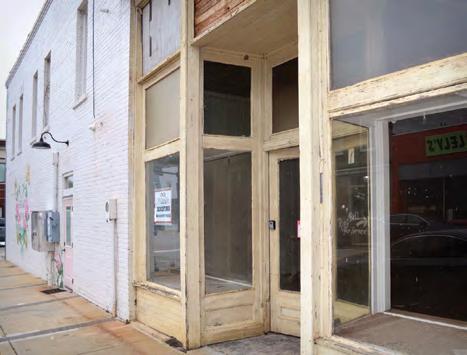
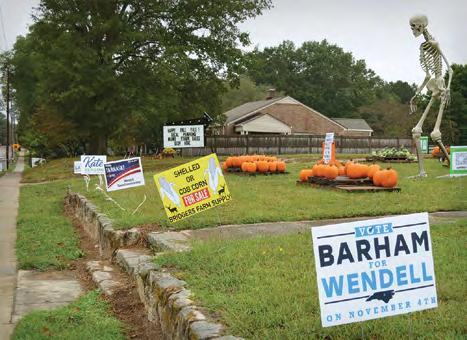
GOP and has been canvassing in Wendell with Turning Point Action, according to his Facebook page.
Critzer owns an anesthesia business and a restaurant in neighboring Knightdale. On his campaign Facebook page, he focuses on traffic, public safety, and supporting Wendell’s small businesses. Critzer is suing the Town of Wendell, the Wendell Police Department, and a town police officer who, Critzer claims, “allowed a marching band to perform outside [Critzer’s] residence after midnight” and then, when Critzer investigated the noise “armed only with a golf club and concrete tool for protection,” falsely arrested Critzer on accusations of assault and resisting arrest. The case was moved to federal court this summer.
Critzer declined to comment for this story. Cordova did not respond to the INDY’s request for comment.
Aside from the fraught issues of population growth and housing, many of the candidates who INDY spoke to brought up the same topics: the need to attract more small businesses to downtown; to protect the open spaces around Wendell; and to make sure roads and other infrastructure keep up with growth. Eatman added that the board of commissioners’ day-to-day work is much less controversial than election season makes it seem.
“It’s easy to lose sight of this sometimes, but we all live here, we all love Wendell,” he says. “On November 5, I hope we’re all going to still live here, and we’re all going to still love Wendell.”
Early voting in Wake County began October 16 and runs through November 1. Election Day is November 4. W

Missing data, top donors, and how candidates are spending their money: what we learned from digging through Durham campaign finance reports.
BY LENA GELLER lgeller@indyweek.com
Money intersects with politics in colorful and confusing ways, and this Durham election cycle is no exception: A graphic spotlighting the seemingly mundane fact that several candidates share the same treasurer has stoked conspiracy theories on social media. The emergence of a mysterious 501(c)(4) that endorsed four candidates prompted those same candidates to commit to rejecting dark money contributions.
Eager for something concrete in the murk, the INDY set out to dig into the hard numbers behind Durham’s campaign finance.
We found some initial gaps in the record. City council candidate Shanetta Burris, who is challenging incumbent Mark-Anthony Middleton in Ward 2, had submitted no campaign finance reports during the current election peri-
od. And mayoral candidate Anjanée Bell, who is running against incumbent Leonardo Williams, was missing two of four required reports.
After the INDY reached out to Burris and Bell on October 16, both candidates submitted their missing reports to the Durham County Board of Elections within 24 hours. Burris’s campaign manager, Taylor Grady-Daly, wrote in an email to the INDY that Burris’s campaign had been “using a new volunteer treasurer and it took some time for training and getting our processes streamlined.” Grady-Daly became the campaign’s new treasurer on October 22. Bell, who is acting as her own treasurer, told the INDY in phone calls and a written statement that the electronic filing process has been confusing and that she believed she submitted reports due on September 2 and 29 when she hadn’t.
Staying on top of campaign finance reporting is “part of the due diligence of wanting to be a public official,” says Bob Hall, former executive director of Democracy North Carolina, a government watchdog group.
“They have to figure it out one way or the other,” Hall says. “If they need help, then they should reach out and get help. But it is an important part of the process. It’s a public process, and the public has a right to know.”
In that spirit of transparency, here are our takeaways from the campaign finance reports in the races for Durham mayor and city council seats in Wards 1, 2, and 3.
The highest fundraiser across all races is city council candidate Matt Kopac, who’s raised over $60,100* in his bid for the Ward 1 seat.
The next highest fundraiser is city council candidate Diana Medoff, at $41,300, who’s running in Ward 3.
That means the most money electionwide is being put toward unseating incumbent city councilors DeDreana Freeman and Chelsea Cook, who are running to retain their seats in Wards 1 and 3, respectively. Freeman and Cook have each raised around a quarter of what their challengers have raised.
The Ward 2 race shows the lowest fundraising totals. Middleton has raised $9,300. Burris has raised $4,000, the least of any candidate.
In the mayor’s race, Bell** and Williams are on par with each other, with each having raised around $30,000.
Cook is their own top donor, having given their campaign $4,000 in cash plus in-kind donations worth $100 and $42, for website expenses.
Bell is also her own top donor, having given her campaign $2,700 in cash plus an in-kind donation worth $800 for event materials.
Freeman, too, is her own top donor, having given her campaign a $3,000 loan. She also contributed $40 worth of office equipment via an in-kind donation.
Meanwhile: Medoff herself was reimbursed $5,900 by her campaign—for yard sign printing, photography, and a table purchased at the Durham Committee on the Affairs of Black People’s August gala—and Medoff has also donated $500 in cash to her campaign, but she’s not technically her own top donor, as the reimbursements are reported under expenditures. (The gala was hosted by the Durham Committee’s 501(c)(3) arm. The organization’s PAC arm, which makes endorsements, operates separately. Medoff’s table purchase is nothing out of the ordinary, according to Hall.)
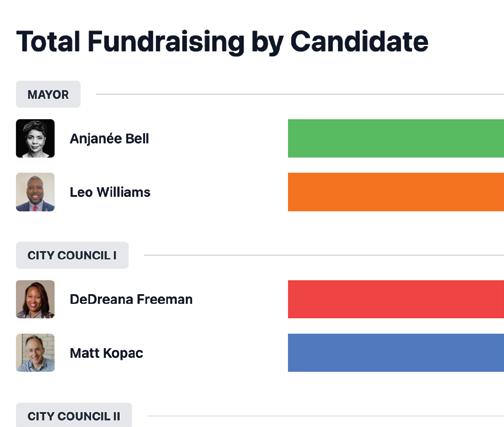
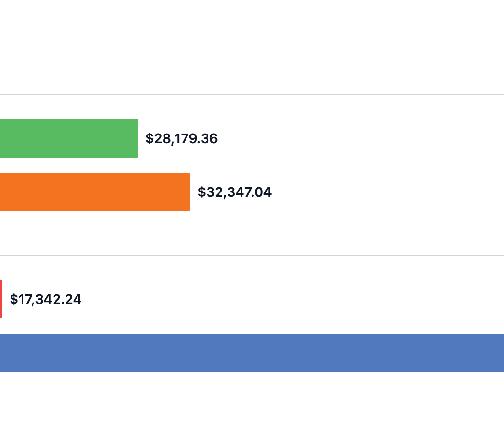

Real estate players, politicians pepper top donor lists
Medoff’s top donor based on receipts is the NC Realtors PAC, which contributed $2,000 to her campaign.
Middleton has a three-way tie for top donors that includes Patrick Byker, a partner at Morningstar Law Firm, which frequently represents developers seeking zoning changes in Durham. Byker gave Middleton $1,000.
Byker also gave $1,000 to Medoff, while the NC Realtors PAC also gave $2,000 to Williams.
Other real estate professionals who show up prominently on donor lists include Joy, Stephen, and Marc Shavitz, real estate investors based in Greensboro who gave Bell a combined $4,700; Henry Hardy, the owner of a construction company in Knightdale, who gave Williams $2,100; James Callan, a real estate developer based in Wisconsin, who gave Kopac $2,000; and Curtis Wilson, an executive at a real estate development and construction services firm in Georgia, who gave Middleton $500.
Middleton’s three-way tie for top donors also includes former Durham mayor Steve Schewel, who contributed $1,000. Kopac’s top donor is another local political figure: Durham County commissioner Nida Allam, whose political committee gave Kopac $2,500. Allam also personally gave Kopac $60.
Over a dozen other former and current electeds have donated money to candidates through personal contributions or political committees, including: former U.S.

Congress member Wiley Nickel and former Durham City Council member Cora Cole-McFadden, who donated to Williams; Durham City Council member Carl Rist, former Durham City Council members Jillian Johnson and Charlie Reece, and former school board member Leigh Bordley, who donated to Kopac; North Carolina state senator Natalie Murdock and school board member Natalie Beyer, who donated to Middleton; former U.S. Congress member Kathy Manning, who donated to Medoff; Raleigh City Council member Jane Harrison, who donated to Cook; and Durham City Council member Nate Baker, who donated to Freeman, Burris, and Cook.
Williams’s top donor is Bobby Kotick, a former video game executive based in California. Kotick gave Williams $6,400, the maximum allowed contribution.
Other top donors run the gamut from local activists to professors. Burris’s top donor is Mary “Mimi” Kessler, a self-employed personal assistant who has been active in organizing around local housing and development issues, including spearheading opposition to the “SCAD” text amendment several years ago. Kessler gave Burris $500. Middleton’s third top donor in the three-way tie is Fanxing Li, an associate professor in the Chemical and Biomolecular Engineering Department at NC State University. Li donated $1,000.

Freeman and Kopac lead in grassroots support
Proportionately, Freeman’s campaign has the largest percentage of small donations: over half of the 107 donations to her campaign were made in amounts of $50 or less. By individual count, Kopac has the most small donations; 78 of the 280 donations made to his campaign were in amounts of $50 or less.
Williams and Bell have the largest proportion of donations made in amounts over $1,000: 9*** and 6 percent, respectively.
When a donor contributes $50 or less to a candidate, their name and address are not disclosed, which makes it hard to accurately assess donor locations.
For example, it appears that Middleton has the smallest proportional amount of Durham donors—just 30 percent—but if all the donors who gave him $50 or less live in Durham, he would actually have nearly 75 percent of his donations based in Durham.
Breaking things down by dollar amount also poses challenges. Technically, $9,700—90 percent—of Cook’s dollars have come from within Durham, but $4,100 of that is from their own contributions.
Given these wrinkles, we’re not getting deep into donor geography.



Bell spent early while others saved for the homestretch
Bell and Williams have spent nearly the same amount over the course of the election: $28,100 and $27,400, respectively. But most of Bell’s expenditures were made between February and July. When most candidates hadn’t started raising money yet or even announced their runs, Bell was steadily spending over $22,000 on office space, photography sessions, coffee meetings, office supplies, and event materials.
Williams didn’t start spending in earnest until mid-August. Following the primary on October 7, he had $5,400 left on hand. According to our calculations, Bell had $106. Kopac has spent the most money of any candidate, but also saved nearly half of his total funds for the monthlong stretch before the general election, as did Medoff.
Most campaigns spent their biggest chunks on marketing materials. Kopac dropped $10,300 at Express Lanes Strategies for yard signs, palm cards, and website work. Cook spent $3,300 at Capitol Promotions on print media. Bell paid filmmaker Rodrigo Dorfman $2,500 for media. Medoff, meanwhile, made her biggest single expenditure—$5,000—to the Durham Committee on the Affairs of Black People PAC after receiving their endorsement. Wil-
liams also gave $5,000 to the Durham Committee after they endorsed him. Freeman gave $250 to Durham Progressive Democrats after their endorsement. These contributions are standard and typically fund poll greeters and voter outreach efforts, according to Hall.
On the staffing side, campaigns were split between paid professionals and volunteers. Williams’s top expense overall was $5,250 to treasurer Phil Seib, who’s also working for Middleton, Kopac, and Medoff. Middleton’s largest expenditure was $5,000 to Reflex Strategies for campaign consulting. Freeman’s biggest expense was $3,100 for her campaign manager’s salary, while Burris’s was $500 for hers.
Cook and Bell are running entirely volunteer operations.
“You do not have to live in Durham to believe in Durham”
Candidates have taken varying approaches to messaging around campaign finance.
Cook has adopted an almost anti-fundraising message on their website, writing that they’re “not interested in drawing large sums of money away from our community to run this campaign.” They write that “outside of standard operating costs, the bulk of our expenditures will go directly to benefiting Durham” and say that after the election, all excess funds will be donated to local nonprofits. Bell states on her site that “the people funding this cam-

paign are the campaign” and casts a wide net: “You do not have to live in Durham to believe in Durham. If this movement speaks to you—your support is welcome here.” Medoff, Kopac, Middleton, and Williams all released public statements about campaign finance transparency and their fundraising principles last month. The catalyst was Yes for Durham, a newly formed 501(c)(4) that endorsed the four candidates, including one candidate, Medoff, whose husband had a tie to the organization. The endorsements raised concerns about coordination as well as dark money—funds from nonprofits that don’t have to disclose their donors. All four candidates quickly issued statements rejecting dark money and stressing that their campaigns are funded by individual donors whose contributions are publicly disclosed.
Neither raising nor spending was neatly correlated with candidates’ performances in the primary. Burris and Cook, among the lowest fundraisers and spenders, both emerged from the primary with significant leads over their better-funded opponents.
In Ward 1, Kopac won more votes than Freeman, but by a slim margin, despite spending over four times as much as she did. In the mayoral race, Williams and Bell spent almost exactly the same amount, yet Williams outperformed Bell by 25 percentage points.




If filing reports is hard, what about managing millions?
Some of these campaign coffers may seem substantial, but they pale in comparison to the over $700 million budget that the Durham City Council oversees. Whoever wins these seats will be making decisions about how to allocate massive sums of taxpayer money, making their ability to handle complex finances a relevant consideration.
Understanding who’s funding candidates’ campaigns also matters because donors may have interests before the council: zoning changes, city contracts, and the like. While donations don’t guarantee influence, they can indicate connections that voters deserve to know about.
The state has tried to make those relationships easier to track. In 2017, the North Carolina legislature passed a law requiring municipal candidates to file campaign finance reports electronically, as opposed to in paper form, if their reports exceed a $10,000 threshold.
“It’s part of that overall effort to have full disclosure in a timely manner,” Hall says.
Both Bell and Cook did not submit their latest campaign finance reports electronically despite exceeding the $10,000 threshold. (Cook filed all reports on paper on time. Bell filed one report on paper on time and submitted others in paper form after her unsuccessful electronic filing attempts.) This required the INDY to manually input hundreds of line items from PDF documents rather than working with downloadable CSV data.
The state’s electronic filing system requires candidates to generate a report using desktop software and then email that file to the state Board of Elections.
Cook’s campaign manager Michael Breen-McKay told the INDY that the campaign “definitely should be filing electronically at this point” but has encountered difficulties with the state’s software, calling it “an ancient program.” (The software was first used in the early 2000s and was most recently updated in August 2025, according to a spokesperson for the North Carolina Board of Elections.)
Breen-McKay also noted that Cook works two jobs, and that this is their first campaign. Cook’s campaign has a volunteer treasurer, Laurel Shulman.
Bell told the INDY she had entered her data into the software but was unaware she needed to email the generated file to complete the submission process. Bell shared a screenshot with the INDY of the campaign finance software showing a field labeled “submit date,” which she said led her to believe the reports had been properly filed.
“This process is cumbersome and time-intensive, even for experienced campaign teams, and especially challenging for those new to the system,” Bell wrote in a statement.
Bell also told the INDY she was unaware her reports hadn’t been properly submitted until October 16, when the INDY contacted her. However, in an October 6 News & Observer article, Bell acknowledged that her reports weren’t online and told the paper she planned to promptly check with the Board of Elections. When asked for clarification, Bell said she didn’t end up checking with the Board

of Elections because peers told her the reports were likely missing due to bureaucratic sluggishness.
This isn’t the first time Durham candidates have struggled with campaign finance compliance. Both Middleton and Williams failed to file required reports during the 2021 election cycle. W
Stuart Robinson contributed data analysis.
* Dollar amounts over $100 are rounded to the nearest $100. ** Bell’s reports contain numerous inconsistencies, namely in reported totals. We calculated Bell’s total fundraising, expenditures, and cash on hand based on the itemized receipts and expenditures in her reports. Our totals do not match Bell’s reported summary totals. When asked about inconsistencies in her reports, Bell attributed them to difficulties with the process of entering data. She said she plans to file amendments to correct the reports. *** Percentages are rounded to the nearest whole percent.
For candidates who filed paper reports, the INDY manually reviewed every line item in their PDFs available on the Durham County Board of Elections website. For candidates who filed electronically, we analyzed spreadsheets based on CSV files extracted from the state website. We manually added in-kind contributions to the expenditure tables in the CSV data, as these contributions are counted as both receipts and expenditures but were not included in the expenditure tables in the CSV data from the state site.
Cash-on-hand totals incorporate what candidates reported as their beginning balance as of January 1, 2025, plus receipts minus expenditures throughout the election period.
To identify donors who are real estate professionals, we examined donors’ listed occupations and conducted online searches to verify their identities against their listed addresses.
Ta-Nehisi Coates • Bakari Sellers
Branford Marsalis Quartet
Melissa Harris-Perry • Brit Bennett
Monét Noelle Marshall
American Dance F estival • YahZarah
Hayti F i lms • Hayti Business Expo
Amaryn Olmeda • Keith Knight
Brandee Yo unger • John Holiday
Tickets on sale now hayti.org/tickets
The Town of Apex’s Environmental Advisory Board approved a set of zoning conditions for a proposed data storage facility
BY JANE PORTER jporter@indyweek.com
At the heart of the debate over whether Apex should annex and rezone a parcel of land located in New Hill just south of Old U.S. Highway 1 for a proposed data storage facility is a central question: Do town leaders envision that property as a corridor for future industrial growth, or do they want it to remain rural pastureland?
If it’s the former, developer Michael Natelli argues, his company’s proposed New Hill Digital Campus is an ideal use for the site; if it’s the latter, he says, his business here is done.
The town’s long-range planning documents, including its Comprehensive Plan, have identified the site for industrial use for at least the past decade, but it is currently zoned for low-density residential.
Earlier this month, the Town of Apex’s Environmental Advisory Board (EAB), working on the assumption that Apex leaders are still planning for that industrial use, voted 6–3 to side with Natelli after his company, Natelli Investments LLC, submitted rezoning conditions aimed at addressing the environmental impacts of the project, including sound pollution, water and electricity usage, and the presence of diesel-fueled generators proposed for the site.
The board is composed of volunteers with expertise in conservation, environmental engineering, land use, and related areas. The board’s approval of the rezoning conditions is nonbinding but indicates a favorable recommendation of the proposal to the Apex Town Council based on environmental impacts when the council con-
siders the rezoning, if the conditions are met. The town’s planning board will weigh in on the land use, and the town council will ultimately decide whether to grant the rezoning to industrial use. Continued opposition from residents is expected.
In an interview ahead of the October 16 board meeting, Natelli told the INDY that he recognizes the proposal would be a major change for the area, but if the town is going to stick with its plan for an industrial use for the site, a data storage facility would be less disruptive than a manufacturing plant, recycling facility, or distribution warehouse, for example. He says the company will go beyond basic requirements for buffers, setbacks, and vegetation to minimize light and noise pollution, and at the board meeting, he committed to regular sound testing and monitoring.
“We’re trying to work in a collaborative way with the town, with the community,” Natelli says.
Still, the impacts of emerging data storage facilities, used to power technology and increasingly powerful AI, are being felt across the country. Large facilities like this one use staggering amounts of electricity and in some cases water, and for many Americans living close to them, the quality-of-life issues are real.
“As a founding member of this board, I don’t think there could possibly be enough zoning conditions to mitigate the negative effects of this proposal,” said EAB member Katie Schaaf, one of the dissenting voters, at the meeting.
Natelli acknowledges that there is a lot

of negative media coverage about data centers, much of it “rightly so, because there are a lot of projects that, for one reason or another, should be scrutinized for certain reasons.”
But he disagrees with the premise that data centers “are bad all the time.”
“Certain areas like this, I feel, are very compelling for data centers,” he says.
“Other areas are not. If we can start looking at things on a project-by-project basis … I do think we can find a way to mitigate a lot of the concerns that are out there, if people are willing to have an open mind about it.”
Here’s a look at the plans for the facility so far, some of the environmental issues under discussion, the community’s concerns, and how the developer has proposed to address those concerns in the rezoning conditions.
There’s no getting around it—data centers are power intensive, and this one especially so with a request for 300 megawatts from Duke Energy (for context, that’s about a third of the total energy output of the nearby Shearon Harris nuclear plant).
Natelli Investments submitted a load study to Duke Energy this spring, and Natelli says the company “feels comfort-
able” asking for that much power. Transmission lines already exist that could link the property to Shearon Harris, and the developer would pay for any infrastructure upgrades needed.
But residents worry that the massive electricity usage would cause their power bills to surge.
Natelli says the facility wouldn’t be taking power directly or exclusively from Shearon Harris but from several different power plants that serve Duke Energy’s grid, and the utility would figure out how to supply the 300 megawatts incrementally.
“Duke [Energy] … is evaluating the ability for them to serve our requested load, as well as what impacts that load might have on the transmission system, and any upgrades required to the transmission system—the extension of power, the substation, switching stations—we have to bear the cost of all that,” Natelli says. “It’s a very, very big commitment, but it’s a commitment that we’re making, and we’re not pushing that cost … on to other people in Apex.”
But a recent report from Bloomberg found that wholesale electricity costs up to 267 percent more than it did five years ago in areas located near data centers, especially in Northern Virginia and Maryland (where Natelli Investments is based), where data

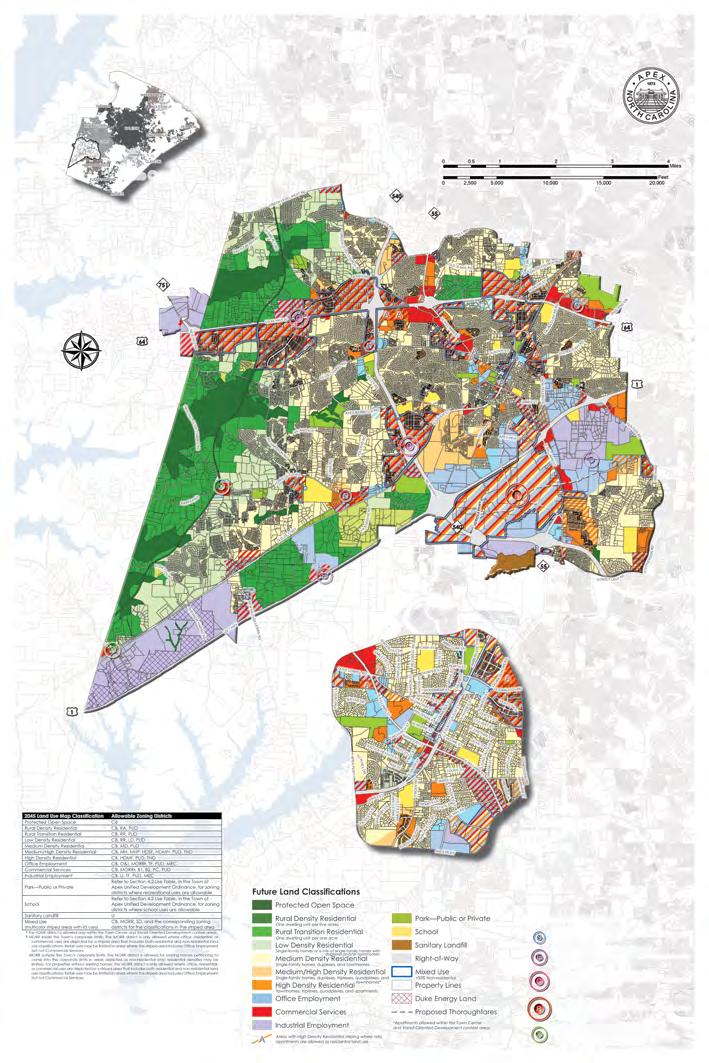
hundred feet from the property.
With the plant, an 18 million–gallonper-day facility with a reclaimed water system already on-site, a prospective client would have the option to use nonpotable treated wastewater—between 0.5 million and 1.5 million gallons per day—for cooling inside the data storage facility.
It’s likely the water would only be used for cooling during the hottest months, representatives for Natelli told the EAB, and the new facility could provide on-site storage for the treated wastewater in the case of an emergency.
It’s also likely that an end user for the site wouldn’t require water at all, as some companies have shifted to using air or fluid cooling systems for their equipment.
“A lot of users are moving away from using water altogether,” said Kraig Walsleben, a consultant for Natelli Investments.
If the site does end up using wastewater, about a third of the water used would evaporate during the cooling process.
“We would have to evaluate ecological impacts,” Walsleben said.
Natelli’s proposal calls for 80 three-megawatt backup generators to be located on the site. Each would be housed inside a tractor-trailer-sized storage container, with a diesel fuel tank stored underneath.
The diesel generators have been a source of anxiety for residents. Burning diesel, a fossil fuel, releases nitrogen oxide, sulfur oxide, carbon monoxide, and particulate matter into the atmosphere.
“Air pollutants are silent killers,” said Michelle O’Connor, a resident of the neighboring Jordan Pointe community, at Apex’s regularly scheduled town council meeting this week. “These particulates are a unique threat as they not only are capable of penetrating lung and olfactory tissues but are small enough to cross the blood-brain barrier. There is no exposure level that is considered safe, just levels that are considered acceptable.”
ning on higher-voltage-transmission power lines rather than regular residential distribution lines, Walsleben explained, and transmission power lines are less impacted by weather or other emergencies that tend to knock out power.
For a few of the EAB members, and for some members of the community, concerns over noise associated with the generators, cooling equipment, and other aspects of the data storage facility are some of the most pressing.
Natelli Investments has sought to address potential noise impacts in its rezoning conditions in several ways.
First of all, the company wants to work with the Town of Apex to create a more robust noise ordinance that will provide an objective way to measure noise output and make sure the facility is in compliance.
In addition to doing its own sound evaluations, the company committed at the board meeting to paying for an independent consultant hired by the town to work on sound attenuation and testing measures. Increased setbacks, the company’s representatives said, will also help, as will buffers with vegetation.
“We’re going to implement design measures like berming and landscaping and noise fencing if required,” Natelli told the INDY. “There are attenuation measures that can be built around the equipment. We’re fully committed to doing whatever we need to to ensure that the sound isn’t causing a problem, and it’s at levels that are deemed acceptable.”
He adds that at the property line, the noise could, at 55 or 60 decibels, sound like a normal conversation. The company plans to study how the sound travels to nearby neighborhoods like Jordan Pointe.
“It’ll hopefully put a number of people at ease,” Natelli says.
centers are highly concentrated.
“It’s an increasingly dramatic ripple effect of the AI boom as energy-hungry data centers send power costs to records in much of the U.S., pulling everyday households into paying for the digital economy,” the report states.
In North Carolina, as Duke Energy evaluates its capacity to provide power for data centers planned statewide, there’s a possibility that the state’s Utilities Commission will have to raise rates on all consumers. But the Town of Apex has its own local dis-
tribution and transmission rates.
“And we’re not touching that,” Natelli says. “There’s nothing we’re doing that’s going to influence the retail rates that [the town] is charging Apex residents.”
Part of the draw of the New Hill site is its proximity to the Western Wake Regional Water Reclamation Facility, a wastewater treatment plant jointly owned by the towns of Apex and Cary that’s situated just a few
In their zoning conditions, Natelli pledges to use Tier 4–equivalent generators, which are designed to meet the U.S. Environmental Protection Agency’s strictest emission standards. They are the most energy efficient and have particulate filters and internal processes to treat emissions, Natelli says.
The generators would all need to be permitted to meet standards set by the EPA and the North Carolina Department of Environmental Quality, and they would be used rarely. The facility would be run-
While the residents in attendance vocally disagreed, it did seem to put the majority of the EAB members at ease. Board member Bill Jensen said the digital campus could provide an opportunity for more Apex residents to work where they live rather than commuting to Raleigh or elsewhere.
“I’ll be frank, I think this property is a decent area for light industrial,” said Jensen before making a motion to approve the rezoning conditions. “‘I’m sorry, I know that’s probably going against the grain, but if you do these things right, and you make a live-work situation, then everybody can benefit. And that’s the critical thing, and that’s what we’re trying to do, is make this thing right.” W

On view at the Gregg Museum of Art & Design, In Search of Thoreau’s Flowers shows how the famous philosopher helped map climate change.
BY SARAH EDWARDS sedwards@indyweek.com
Henry David Thoreau was big on taking walks—or “sauntering,” the word he once used in a lecture on the subject. In that lecture, the writer and philosopher asserted that he couldn’t feel well unless he sauntered for at least four hours a day.
It was on those long walks around Concord, Massachusetts, that Thoreau collected hundreds of botanical specimens, which he then brought home to press, scribbling down notes about where and when each plant was collected. Now, 648 of those preserved specimens are housed and digitized in the Harvard University Herbaria.
But while those specimens from Concord made it to this century in preserved form, many of the actual plants didn’t survive: an estimated 30 percent of the species from Thoreau’s records have gone “locally extinct,” according to the museum, with another 35 percent “close to the same fate.”
In Search of Thoreau’s Flowers: An Exploration of Change
and Loss, currently on view at NC State University’s Gregg Museum of Art & Design, draws on that digitized collection in a small but expansive-feeling exhibit that contends with the loss of biodiversity. Originally mounted at the Harvard Museum of Natural History, the exhibit represents the joint scholarship of Marsha Gordon, Robin Vuchnich, Leah Sobsey, and Emily Meineke, an effort that marries science, art, and the humanities. This iteration of the exhibit, which expands on the original by tying in North Carolina flora and fauna, opened in September and runs through January 31, 2026.
On a recent museum visit, Gordon, an artist and a professor of film studies at NC State, walked me through the exhibit.
“We want people to feel a sense of beauty and awe,” she explains, standing outside the Black-Sanderson Gallery, which anchors the exhibit.
In Search of Thoreau’s Flowers: An Exploration of Change and Loss is currently on view at
“Definitely awe,” a museum visitor interjects, coming out of the gallery. She nods at me: “You’ll see.”
About half of the exhibit is housed in the lobby we’re standing in. To Gordon’s right is a digital mosaic she created with Vuchnich, who is an adjunct lecturer in NC State’s College of Design. Named “Herbaria North Caroliniana,” the work spans five windows and features images from NC State’s vascular herbarium alongside photographs of pollinating insects from the university’s research collections. Plants and insects are arranged in delicate patterns, creating mosaic-like designs you might see through the end of a kaleidoscope.
In front of us, in the lobby, an eye-catching blue swoop over the gallery door compels us inward. This is artist Sobsey’s “Swarm: The Blue of Distance,” an installation of once common North Carolina insects—the giant silk moth, the rusty patched bumblebee, and more—that are now endangered or locally extinct.
Sobsey, an associate professor of photography at UNC Greensboro, incorporated specimens from NC State’s collections, representing regions from all across the state. She created the installation using cyanotype—a sun-printing technique discovered in 1842 that produces Prussian-blue images, and a throughline through the exhibit.
To the right of the gallery door is another cyanotype, this one an image of the oldest longleaf pine in North Carolina, which is located near Southern Pines and estimated to be 477 years old. Like the insects darting toward it, this Southern lodestar is also in danger: Longleaf savannas, some of
the richest ecosystems in the world, now occupy less than 3 percent of the original 90 million acres of forest the trees once sprawled across.
“There’s this way of thinking about plant invisibility, you know—we don’t really think about plants in the same way that we do with animal loss,” Sobsey says. Is it depressing to see renderings of species we’ve driven out with deforestation, pollution, pesticide use, and a hundred other facets of modern life? Absolutely. Global insect populations are in a free fall, with a 2019 study determining that 40 percent of insect species are in decline, with the rate of species decline topping out at 2.5 percent a year.
But while In Search of Thoreau’s Flowers contends with this profound loss, it doesn’t fail to offer museum visitors ideas for a way forward. An adjoining exhibit, The House of Ideas: Plants in Art, offers practical local tips. These come from Meineke, an assistant professor of urban landscape entomology at the University of California, Davis: Let trees live as long as possible. Plant a pollinator garden. Let bees live on your property.
“This came together from four friends, really,” Gordon says. “We were trying to think through something we could do around questions of climate change and the environment—thinking about it in a way that is realistic about what is happening in our country and all over the world, but also not to be so doom and gloom that people shut off.”
Thoreau’s Walden, a staple of high school curricula, has inspired generations of nature lovers. Sure, the proto-libertarian philosopher had his shortcomings: he was a bit of a misanthrope, one who outsourced laundry to his mother two miles away from his famous cabin, all while
preaching strident individualism.
Still, finer points of his writings remain evergreen: the call to cherish public lands, to “live deliberately” and simply, to cultivate curiosity about your own small corner of the world. And, as In Search of Thoreau’s Flowers demonstrates, the writer was ahead of his time as a naturalist. Walden was his Eden.
Thanks to Thoreau and other area naturalists, the ecosystem of Concord—which author Henry James once called “the biggest little place in America,” due to its historical import—has been documented across centuries. That record formed a portrait of the biological impacts of climate change. In Walden Warming, the botanist Richard Primack observes that Thoreau’s archives helped scientists determine that local plants were now flowering weeks earlier than they were 160 years ago.
“Thoreau was doing early climate research,” Sobsey explains. “He kept detailed notes about when things were flowering, and that’s the data set that now they’re looking at, in terms of how things have changed.”
Sobsey has worked with 19th-century herbaria before: Emily Dickinson, it turns out, was also a devout botanist who left behind 400 pressed plants.
Sobsey says the two writers had different styles: Dickinson’s pressings were “beautiful and pristine,” like her poems, while Thoreau’s were a bit more hectic. Considered together, though, it’s hard not to be inspired by the ways preservation work can deepen a relationship with the natural world.
Inside the Black-Sanderson Gallery, Vuchnich’s data visualizations of Thoreau’s plant archive are mapped across three walls. One wall features a quilt-like image of the her-

barium, with extinct plants coded blue; another wall is an immersive visualization of colorful, endangered plants that hover over Walden Pond.
When the gallery is empty, the flowers grow across the screen; when a visitor steps into an interactive circle in the middle of the space, the flowers, in turn, react—dancing, dispersing, and reassembling.
While this might seem like an indictment of human presence, the effect is more nuanced: The show’s general thrust is a gentle reminder that we coexist with the natural world and bear a dependence on, and responsibility to, it that can be joyfully responsive. The gallery projections would be an animating space for kids to move around in; conversely, a few cushions along the wall are an invitation to sit and reflect as soundscapes recorded at Walden Pond fill the room.
In Search of Thoreau’s Flowers has a small museum footprint, but its structure is designed for exploring, maybe even sauntering. On your way out of the gallery, linger at Sobsey’s cyanotypes of Thoreau’s plant pressings, transposed against his tangled handwriting and gilded with 23-karat gold leaf. These “plant portraits,” as Sobsey calls them, have reflective surfaces where, when you lean in, your own face will appear: another reminder of our inextricable relationship with nature.
Finally, don’t leave before visiting the museum’s pollinator garden, immediately adjacent to the lobby. While blooms are quiet this time of year, the garden is an active reminder that it is possible to cultivate your own small corner of the world and make it better. After all, Thoreau’s walks—and the plants he collected on them—are still creating powerful ripple effects, 160-some years later.
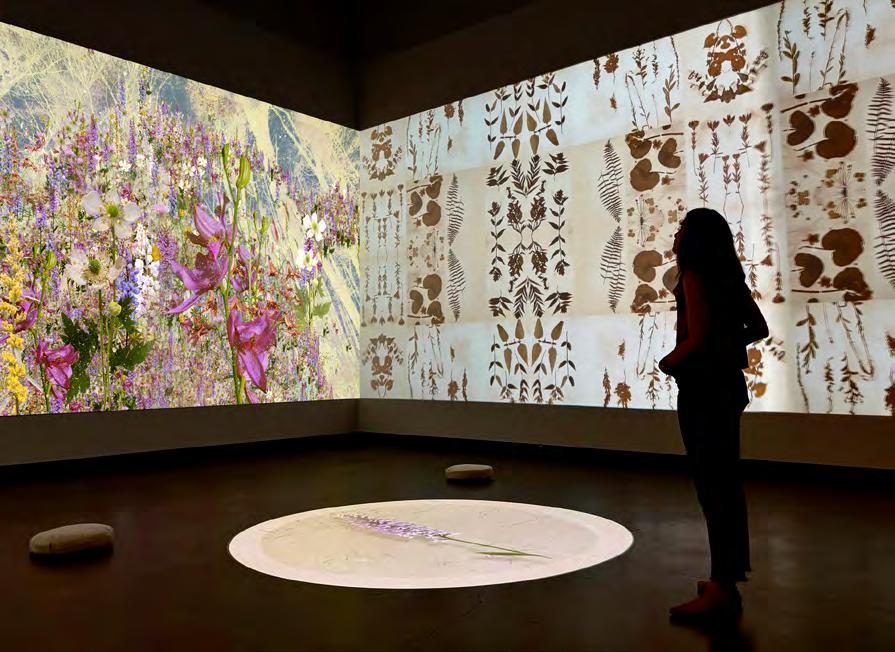
LITTLE GEM
630 Weaver Dairy Road, Chapel Hill | littlegembar.com

Little Gem brings sprightly cocktails and a music-infused ethos to the suburbs of Chapel Hill.
BY BRIAN HOWE food@indyweek.com
“I’m making a Porchlight, which is a remix of the Manhattan,” says Paul Finn. We’re at Little Gem, the new craft cocktail bar in Chapel Hill that Finn co-owns with Beau Catering’s Lauren Erickson Bennett. Tucked behind barbecue bastion The Pig, in the suburbs along Weaver Dairy Road, it opened in August. The barroom is long, narrow, and alluringly indigo, the decor favoring soft purples and blue neon accents.
Crushed ice sparkles in a coupe glass as Finn pours elixirs into a shaker. “We’re starting with some Old GrandDad bourbon, and then some Byrrh, a quinquina similar to sweet vermouth,” he explains while a vintage rhythmand-blues LP revolves on a turntable behind him. “Then a little bit of Meletti Amaro, which adds a bitter caramel note that blends nicely.”
Instead of a bottle of Angostura, he picks up a long
pipette. “This is where we really depart from the Manhattan, with the Hellfire habanero shrub bitters, which gives a tasty heat to it on the back palate.” He ices the shaker, stirs, strains, and then fills the chilled coupe, oiling the rim with an orange twist.
I sip. The scene goes dark as my eyes involuntarily close. The complex sweetness and spicy bitters tell a story, and the aromatic Byrrh opens through it like a flower. All the elements of the Manhattan are there, transformed and reharmonized. It’s almost like having my favorite tipple for the first time.
As Little Gem’s lead bartender, Finn has created an alchemical menu that’s grounded in American cocktails and European aperitifs but takes flight in flavors from around the world—agave and yuzu and tropical rum. The generous use of vermouth, amaro, and fortified wine lends smoky,
savory, herby layers to 18 drinks, divided equally among “Originals,” “Covers,” and “Remixes.” The flip side of the menu has a nice selection of beer and wine, but that’s not why we’re here.
One drink called the Nassau Moon—a mellow rum concoction with spiced pear liqueur, cinnamon syrup, and allspice bitters—is created by bartender Brie Lotz and is a nod to The Beach Boys’ “Sloop John B.” At the other extreme, the Corpse Paint Reviver is a black-metal twist on the Corpse Reviver No. 2, that classic pre-Prohibition hangover cure. “The aquavit is similar to gin but more caraway than juniper,” says Finn. He chose all Scandinavian-style spirits, garnished with an upside-down cross cut from an orange peel and a single drop of his “Death Tincture,” a blazing blend of peppers and coriander.
Musical thinking comes naturally to Finn, who plays in indie bands like The Kingsbury Manx and Evening Pines. His cocktail career pre–Little Gem began and ended at Lantern, where he was a burgeoning bartender in the 2000s before returning as an experienced bar manager in the 2020s. In between was a stint in New York and nine years in Austin, where he helped to open the popular bar Garage.
Finn came home with a vision for his own place, but he couldn’t find anything affordable in Triangle downtowns. But after working at Lantern, he had a side gig at Beau Catering, next to The Pig. When Bennett decided to take over the space recently vacated by The Pig’s back bar, the Little Gem dream was reborn. Through this neighborly arrangement, Little Gem bartenders serve up drinks
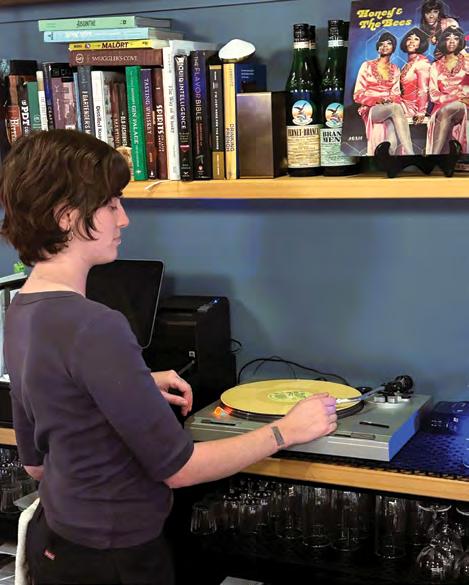


Beau Catering also provides the bar with “Sound Bites,” which include house-made chips with caramelized shallot dip, jalapeño pimento cheese, and banana cream pie.
“In Austin, I had the realization that whatever creativity I was putting into music, it was the same with cocktails,” Finn says. “You’re working, you’re slammed, and people are watching you. It’s a performance when it’s busy, like playing a rock show.”
His philosophy of cocktails is identical to his philosophy of music. He builds his drinks like chords, stacking harmonies and dissonances into meaningful equilibria.
Annie Vedder, the other bartender working tonight, testifies that Finn trains his staff to shake cocktails in time with “Sympathy for the Devil,” the trick that first unlocked the rhythm for him.
“You don’t want a mush of ingredients








where you can’t pick anything out,” Finn says, meaning both spirits and songs. “You want there to be multiple layers to it, with bass, treble, and midrange, a beginning and an end.”
This design is evident in the two other drinks I try. The Five-Day Weekend, which balances tequila and mezcal with citrus, ginger, and a chili liqueur, is like a sunny autumn day glinting in a glass. And the unforgettable Ohm’s Law is a milky cloud of Japanese whisky, almond syrup, and umami bitters floating around a block of ice; it tastes like mild Scotch and crème fraîche and clean snow, and I might order it again even before that transcendent Porchlight. But there is so much more to try (the martini has four vermouths for only 13 bucks), and such soulful, exacting offerings make Little Gem a libation destination worth the drive.













H-52229, OR 218294, PA 179643, 069383, RI GC-41354, TN 10981, UT 10783658-5501, VA 2705169445, WA LEAFFNW822JZ, WV WV056912.
MONTHLY FEATURE SPOTLIGHTING INTERESTING FILMS COMING TO LOCAL THEATERS
Black comedy Bugonia from Yorgos Lanthimos, Ethan Hawke in Blue Moon, and more films coming to theaters near you.
BY GLENN MCDONALD arts@indyweek.com
There’s an old notion in pop culture that says movies are one of the ways we talk to ourselves, as a people, about our fears and anxieties. If so, recent films suggest that we’ve hit a critical moment in that conversation—that awful tipping point where we’re muttering darkly, laughing bitterly, and about to lose our shit.
Case in point: Bugonia, the latest from Greek filmmaker and provocateur Yorgos Lanthimos, is a black comedy about two young men who kidnap a powerful CEO. Jesse Plemons plays the ringleader, a conspiracy-minded beekeeper who’s convinced that the executive (Emma Stone) is a space alien intent on destroying the planet. Then things get really weird.
Bugonia is technically an English-language remake of an older South Korean film. But like Paul Thomas Anderson’s One Battle after Another, it’s really a redirected energy scan aimed at the heart of our global nervous breakdown. The film might look like a standard kidnapping thriller. But check the trailers online and you’ll clock the familiar 21st-century concerns: ecological collapse, sociopathic corporations, political violence, ambient dread.
The good news is that—also like One Battle after Another—you’re in for a ride. Lanthimos is a fearless and funny filmmaker, especially if you like your humor dark and deadpan. Look, these are laugh-or-cry times. Might as well laugh.
Or dance! Dancing is good! Another movie-night option has presented itself

this month: For two nights and two nights only—November 5 and 8—hip-hop soul icon
Mary J. Blige is beaming her first-ever concert film exclusively to theaters. (There will be no streaming or digital release.) Mary J. Blige: For My Fans showcases Blige’s historic sold-out performance at NYC’s Madison Square Garden back in April.
According to promotional materials, the idea behind the theatrical release is to get fans up on their feet, out in the world, and watching together in a shared space. It’s a great idea—concert films always play better in a crowd, and the sound will be better than anything you can get at home. The film will also feature behind-the-scenes footage and surprise guests. For My Fans has been booked at several area theaters. Check online listings for ticket information.
Two additional options this month for the more intense culture vultures: Director Richard Linklater (Boyhood) is releasing his latest two films more or less simultaneously. The historical drama/comedy Blue Moon follows famed songwriter Lorenz Hart (Ethan Hawke) as he reflects on his life over the course of one boozy evening. The evening in question, unfortunately, is the 1943 opening night of the musical Oklahoma!, the new hit from his former songwriting partner Richard Rodgers. Advance reviews from the festival circuit say: sad and witty.
Linklater’s other film forms a kind of historical diptych on the creative life. The comedy/drama Nouvelle Vague depicts
the filming of Breathless, the 1960 film from director Jean-Luc Godard. French actor Guillaume Marbeck plays the maverick young director; Zoey Deutch plays his muse, the American actress Jean Seberg. Shot entirely in France, the film is presented in black and white in the old 4:3 aspect ratio. Advance reviews from the festival circuit say: stylish and witty.
It Was Just an Accident, the latest film from the impossibly courageous Iranian director Jafar Panahi, took home the Palme d’Or at this year’s Cannes Film Festival. Shot in secrecy, the film is structured as a fictional thriller concerning political prisoners and reciprocal violence. Panahi has been imprisoned twice for making movies like this in his home country.
The indie Sarah’s Oil tells the true story of Sarah Rector, a young Black girl who was accidentally allotted oil-rich Oklahoma land in the early 1900s. Everyone tries to steal it, of course. Happy spoiler from actual history: Sarah became one of America’s first Black millionaires at age 11.
The documentary The Librarians chronicles the efforts of library workers in Texas and Florida as they work together to fight America’s latest surge of book-banning initiatives.

Russell Crowe stars as Hermann Göring in the historical drama Nuremberg, concerning the famous trials of Nazi leaders after World War II. Rami Malek plays the psychiatrist tasked with determining whether Göring is fit to stand trial. Also in the cast: John Slattery, Richard E. Grant, and Michael Shannon.
Lest this month seem too heavy, don’t forget about Now You See Me: Now You Don’t, the third installment in the improbably fun heist film franchise featuring rogue illusionists and wily magicians. Most of the original cast is back, including Jesse Eisenberg, Woody Harrelson, Dave Franco, Isla Fisher, and Morgan Freeman. W





To process a series of profound losses, Durham jazz musician Nnenna Freelon poured herself into a freeform memoir that takes the shape of musical improvisations.
BY SHELBI POLK arts@indyweek.com
When Nnenna Freelon feels overwhelmed, she gets busy.
No, that’s not in the wrong order. The bigger the feelings, the more she packs onto her schedule. “My normal go-to, when I’m stressed, is to get busy,” she says. “I just do stuff. I’m a busy little bee.”
In the past six years, Freelon has experienced plenty to be overwhelmed by. In July 2019, her husband, renowned architect Phil Freelon, died of ALS; six months later, in January 2020, her sister, Deborah Pierce—a hospice and palliative care physician—died of lung cancer. In between this massive sequence of losses, Freelon’s beloved dog, Basie, passed away. Left alone in her newly quiet Durham home, Freelon, a celebrated jazz vocalist, initially wanted to pour herself into a demanding jazz tour. But then COVID-19 arrived, putting live music on hold.
At first, Freelon didn’t give up on the idea of a tour. But then, as “a couple weeks turned into a couple months
turned into a couple years,” she says, she settled into a renewed creative practice. “It was the quality of the quiet that allowed me to sort of lean into writing music.”
As a seven-time Grammy-nominated jazz musician, Freelon is no stranger to life-giving creativity. But in this era of mourning, the words just kept coming. Out of this period came a Grammy-nominated album, Time Traveler, the podcast Great Grief, and, this month, a book called Beneath the Skin of Sorrow: Improvisations on Loss.
“I wrote my way out of depression, out of a sense of ‘What is my life now? What use is it to consider myself as what I was?’” Freelon says over a video chat from her airy living room. She wrote herself through the “very uncomfortable” transition period. “I wasn’t looking to write a book, necessarily,” Freelon says, “but I was writing to save a life.”
Beneath the Skin of Sorrow is a collection of writings drawn from Freelon’s journals. It’s a bit hard to quantify, perhaps in part because Freelon herself had to find her way
Author Nneena Freelon PHOTO BY CHRIS CHARLES
into a book by thinking of the process in terms of music. The book is broken into four movements, flowing improvisationally between an anecdote, poem, sci-fi-inspired short story, and conversation with a personified Grief. Freelon admits this structure was a problem for an early editor.
Initially, Freelon says, she was resistant to the idea that the manuscript even was a book, but the more she shared bits and pieces with friends, the more they pushed her to share with the world. “I was clutching my pearls,” Freelon says. It was her story, not anyone else’s. “It was really the love and support of friends who suggested that within the individual, personal, could lie the universal.”
She then leaned into the idea of improvisation as a guiding philosophy—but still had no interest in writing a how-to book. In her experience, grief was a process you made up as you went along.
“The book itself is the evidence that this is true, that an improvisatory relationship with grief can exist,” she says. “You don’t have to be a jazz musician. People do this all the time, but they don’t call it that.”
Anyone who feels their way through grief with a sense of humility and an effort to listen to what nature or the world is trying to tell them is improvising their way through grief. She outlines some examples.
“They start a foundation for people who are in a similar situation, they volunteer with hospice. They give money to the American Cancer Society. They make a grief card,” Freelon says. “All these things are responses to the trauma of loss, and it is an improvisatory practice. But I didn’t learn it in church. Nobody said you can dance with your grief. I never heard that. Didn’t even hear it suggested as a good idea.”
Phil and Nnenna Freelon married in 1979 and settled in Durham soon after. It wasn’t too long before they became a Durham arts power couple: Phil founded architecture firm The Freelon Group and designed buildings all over the country, from the Museum of the African Diaspora in San Francisco to the Smithsonian National Museum of African American History and Culture in Washington, D.C.
The couple’s three children, Deen, Maya (who provided work for the cover of Beneath the Skin of Sorrow), and Pierce, are all artists or academics who share their parents’ passions for education and the arts. In Beneath the Skin of Sorrow, Freelon describes the way Phil encouraged her musical ambitions, refusing to let her use their family as an excuse to give up on jazz, and the way her roles of mother, wife, and artist intersected with and fed each other.
Phil Freelon’s mark on Durham is undeniable. He designed downtown hallmarks like the Durham Bulls Athletic Park, the Durham Station Transportation Center, and the Durham County Human Services Complex. Near the end of his life, the Freelons created the NorthStar Church of the Arts to safeguard a space for Durham’s marginalized
artists amid When Phil’s legacy who’s ever on the way outlook on “I’m reminded legacy of blood is how beautiful still,” she cess of decomposing thing unrecognizable dreds of “Grief gives for impermanence micro level, sal level,” same way, tion and this big circle These at in her and people In the middle knows her ing to mask let everyone reading an some magic didn’t expect,” you can be the door When tion, Freelon but I can she says. rope—99.9 teaches you The world what’s rewarded.” And the with a generative, outside. and from Freelon home—meditations cycles and forget, which on our call. eardrums that’s more ing,” she That listening clearly deeply throughout stantly on nature and might that might her through fixing Beneath space, and to leaving the allure
artists amid the city’s rapid gentrification.
When I ask Freelon how it feels to share Phil’s legacy with, for example, anyone who’s ever come to a Bulls game, she muses on the way grief can change your entire outlook on time.
“I’m reminded when I see his work and his legacy of how important it is to live while blood is running warm in your veins, and how beautiful it is that his legacy exists still,” she says. “And even that is in the process of decomposing and becoming something unrecognizable in hundreds and hundreds of years.”
“Grief gives you a real wide appreciation for impermanence in all forms, geologic, the micro level, the macro level, on the universal level,” she continues. “It’s all going in the same way, from construction to deconstruction and then back up again. It’s all doing this big circle thing.”
These days, Freelon shares where she’s at in her grief as often as she needs to, and people are eager to share right back. In the middle of a performance, when she knows her singing will be hampered by trying to mask her emotions, she’ll stop and let everyone in on where she’s at, often reading an excerpt from the book. “There’s some magic going on. Honestly, magic I didn’t expect,” she says. “Seems like when you can be authentic and honest, it opens the door for others.”
When I ask if she can define improvisation, Freelon demurs. “I don’t know if I can, but I can tell you how improvising feels,” she says. “It feels like walking on a tightrope—99.9 percent of it is trust. The world teaches you not to trust and not to listen. The world teaches you to be right. That’s what’s rewarded.”
And the best way to get reacquainted with a generative, creative listening? Go outside. The book is full of messages to and from the nature that surrounds the Freelon home—meditations on the natural cycles and connectedness that we so often forget, which Freelon is quick to reiterate on our call. “I think nature cleans out your eardrums and allows you to enter a space that’s more receptive to that kind of listening,” she says.
That listening comes through. Freelon is clearly deeply engaging with her emotions throughout the book, but she’s also constantly on the lookout for messages from nature and her departed loved ones. What might that turtle have to say to her? How might her handy-as-hell husband talk her through fixing the dishwasher? As a book, Beneath the Skin of Sorrow is full of white space, and if there is a how-to, it is a call to leaving space for the unexpected, despite the allure of a full schedule. W




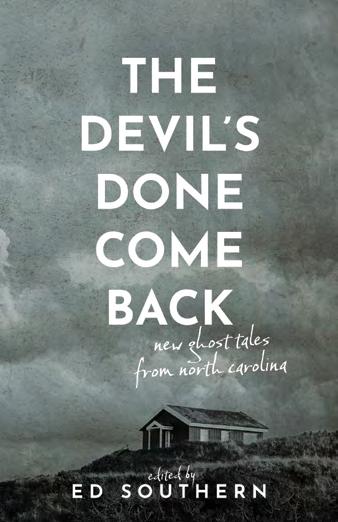
Classic North Carolina lore like the Brown Mountain Lights, the Devil’s Tramping Ground, and more are reimagined in a new short story collection.
BY SARAH EDWARDS sedwards@indyweek.com
Stories about the dead—the dead dead—often fade away over time, but there’s something about ghost stories that has staying power. Maybe it’s the way that such stories activate our otherwise suppressed connection to the liminal and unknown. But there’s also something strangely localizing about a good haunting, reminding us that the places where we live are textured with past stories.
“The phrase that keeps coming to mind—it’s such a terrible pun, but it’s that ghost stories have a weird power to bring a particular place alive,” the writer Ed Southern says, a little ruefully. “For me, reading ghost stories as a child was my first introduction to North Carolina as a place, you know? The first time I began thinking about the whole state as my home, as opposed to just the town where I live.”
The new collection The Devil’s Done Come Back: New Ghost Tales from North Carolina is a fresh take on such stories. Out from Durham publisher Blair and edited by Southern, a slate of contemporary North Carolina writers, including Wiley Cash, Julia Ridley Smith, Tyree Daye, and Ross White, reimagine classic stories from around the state, ranging from early colonial lore like Virginia Dare to Western North Carolina phenomena like the Brown Mountain lights. Weaving throughout the collection is “The House of Vine
and Shadow,” a ghost story that rings particularly true, about a man visiting an elderly couple and attempting to persuade them to sell their land to a developer—only to find himself physically locked into their stories about the Tar Heel State and reminded of what’s at stake when we try to thoughtlessly bypass the past. On the heels of the book’s September publication, the INDY spoke with Southern about what makes a good ghost story.
INDY: What was the genesis of this collection?
ED SOUTHERN: To be honest, I got stuck on another project that I was working on, and whenever I get stuck writing, I turn to reading. And the thing that I’ve been trying to work on grew, to some extent, out of North Carolina folklore, so I decided to go back and read these ghost story collections that I’ve loved as a child. In doing that, I realized that these stories were overdue to be updated—to be reimagined and retold for another generation.
What kind of stories do you think readers might be familiar with? What are some of the big standout North Carolina ghost stories?
Writer and editor Ed Southern PHOTO COURTESY OF BLAIR
If someone comes to this book and they’re already a fan of North Carolina folklore or North Carolina ghost stories, then most, if not all, of the stories in here will be familiar. We have a lot of the old standbys: Virginia Dare in the Lost Colony, Blackbeard. We’ve got the Devil’s Tramping Ground, of course, we’ve got the Brown Mountain lights. And then there are a few that are a little more—I don’t want to say, obscure, but they don’t show up in all of the North Carolina history textbooks, like the Chimney Rock phantasms, the ghost riders of Chimney Rock. Jeremy Jones has a great take on those in this anthology. There’s the Raven Mockers, which are part of Cherokee folklore—Annette Saunooke Clapsaddle wrote a great story around those. And then one of the biggest departures is that Mark Powell took a legend of a phantom hitchhiker and turned it into a phantom river rafting, which was a lot of fun.
There’s a mix of poetry and fiction. Why did it feel important to have a blend of genres in the book?
Honestly, I didn’t plan that. I had asked Ross White, a wonderful poet in Durham, to give me his take on the Little Red Man, the ghost in Old Salem. [White] has deep roots in Winston-Salem, going back—his family can trace their tree all the way back to Old Salem. I thought he would give me a story like everyone else, and instead he turned in this wonderful poem, “Bring Forth a Beauteous Heavenly Light.” I remembered poems that I’ve read before by Tyree Daye and Julie Funderburk that involve ghosts, and asked if we could use those. And then Ross, I guess he was just inspired—he turned in a couple more poems about ghosts for the anthology.
Writers go rogue. You can’t pin them down.
Exactly—it was, to quote the late, great Bob Ross, “a happy little accident.”
There’s a four-part story throughout the book that structures it—can you tell me more about that story?
If there’s any one inspiration for it, it’s a house that I passed, driving out of Charlotte one time—this was years ago, and I saw this forlorn little farmhouse sitting on the side of Highway 16 with this never-ending blitz of traffic going by, as Charlotte continued to expand. I was driving by at 50 miles an hour, and it was a quick sight that just kind of lodges in your imagination.
I came up with it in response to my publisher’s question about writing an introduction to the book, and the more I thought about it, the less confident I felt about trying to explain all these stories. And I thought: “Well, I think a story would be the best way to introduce the themes of the book, such as they are, and set the stage for the stories that the reader is about to encounter.” W
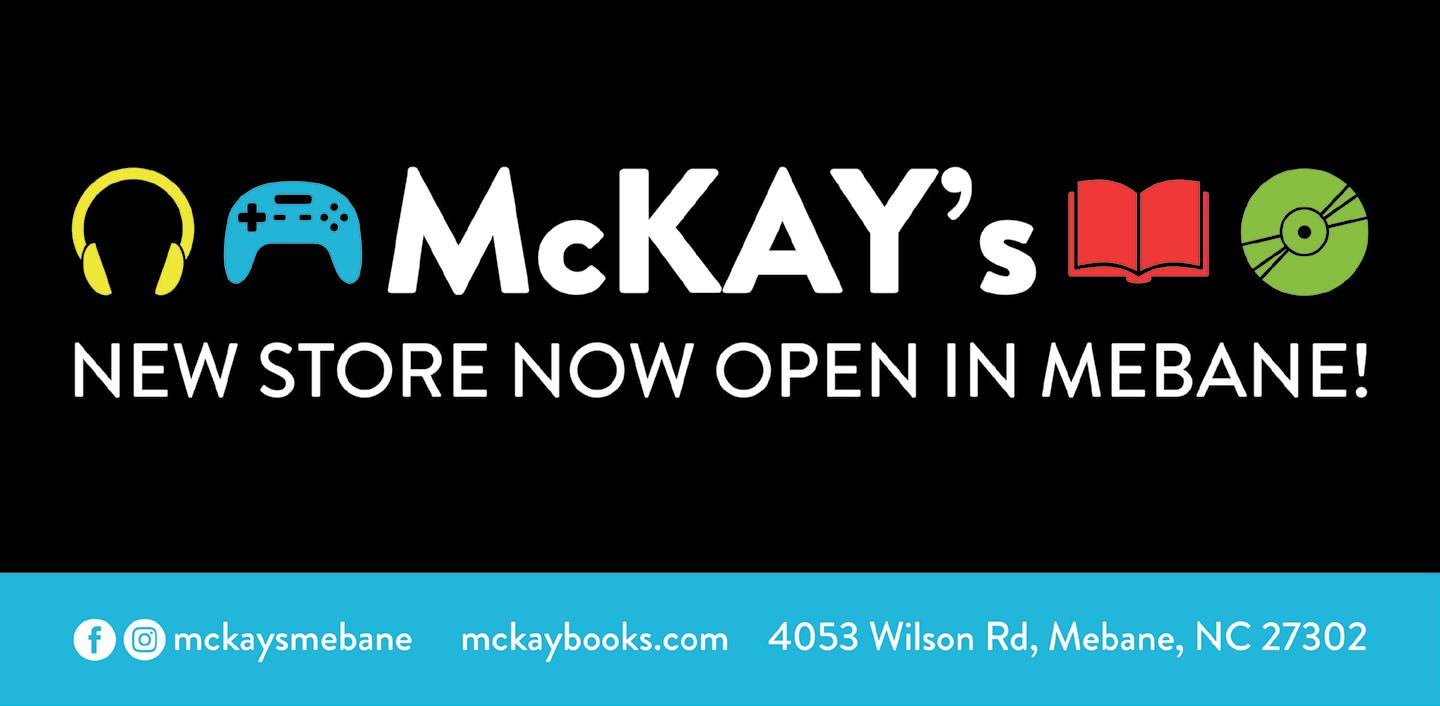




WED 10/29
MUSIC
Big Thief 7 p.m. Red Hat Amphitheater, Raleigh.
Carolina Public Humanities: A Tribute To Mahalia Jackson 6 p.m. Flyleaf Books, Chapel Hill.
Jonas Brothers 7:30 p.m. Lenovo Center, Raleigh.
Kitty Craft, After 8 p.m. Cat’s Cradle, Carrboro.
Romeo & Juliet 7:30 p.m. Titmus Theatre at Frank Thompson Hall, Raleigh.
SIX 7:30 p.m. DPAC, Durham.
STAGE
Witch Oct. 24-Nov. 9, various times. Raleigh Little Theatre, Raleigh.
PAGE
Carlo Rotella: What Can I Get Out Of This? 5:30 p.m. Flyleaf Books, Chapel Hill.
Michael Connelly: The Proving Ground 7 p.m. Quail Ridge Books, Raleigh.
THUR 10/30
MUSIC
All Y’all Halloween Ball II 8 p.m. Motorco, Durham.
John Legend 8 p.m. Red Hat Amphitheater, Raleigh.
MAKE, Tacoma Park, Spookstina 8 p.m. Cat’s Cradle Back Room, Carrboro.
Oddisee ‘The Good Fight’ 10 Year Anniversary Tour, Lord Fess 7 p.m. Local 506, Chapel Hill.
TJ Maiani Quartet 7:30 p.m. Sharp 9 Gallery, Durham.
Weakened Friends, Rodeo Boys, Em Gee 7:30 p.m. The Pinhook, Durham.
WXYC Goes Psycho: Halloween Dance party 10 p.m. Cat’s Cradle, Carrboro.
STAGE
All My Sons Oct. 30-Nov. 8, various times. Theatre Raleigh Arts Center, Raleigh.
PAGE
Carlo Rotella: What Can I Get Out of This? 5:30 p.m. Flyleaf Books, Chapel Hill.

Boris: Pink 20th Anniversary Tour 2025 8 p.m. Haw River Ballroom, Saxapahaw.
GAG! To Death! Part IV 10 p.m. The Fruit, Durham.
Idol Talk, Cold Choir, DJ VamPoison, DJ Valefor 8:30 p.m. Cat’s Cradle Back Room, Carrboro.
Medium Heat, Megayacht 8 p.m. The Berkeley Cafe, Raleigh.
PHK Halloween Party: Dancing With The Phantoms 10 p.m. The Pinhook, Durham. Rachmaninoff Symphony No. 2 by NC Symphony Oct. 31-Nov. 1, 8 p.m. Meymandi Concert Hall, Raleigh.

Saxsquatch, Dougish 8 p.m. Cat’s Cradle, Carrboro.
Shadowgrass 8 p.m. Lincoln Theatre, Raleigh.
STAGE
The Rocky Horror Picture Show 8 p.m. and 11:30 p.m. The Rialto, Raleigh.
Titus Andronicus Oct. 31-Nov. 9, various times. Shadowbox Studio, Durham.
SCREEN
Frankenweenie, Halloween 6 p.m. Dix Park Flowers Field, Raleigh.
SAT 11/1
MUSIC
Ann Hampton Callaway: Finding Beauty 7 p.m. Sharp 9 Gallery, Durham.
Boney James: Slow Burn Tour 8 p.m. The Carolina Theatre, Durham.
Daft Disko: A French House & Disco Party 9 p.m. Motorco, Durham.
Dante High, Cage Bird Fancier 8 p.m. Cat’s Cradle, Carrboro.
FOLLOWEEN 10 p.m. The Fruit, Durham.
King Mackerel & The Blues are Running 7:30 p.m. Haw River Ballroom, Saxapahaw.
O.F., Kill the Buddha, Paint Work 8 p.m. Cat’s Cradle Back Room, Carrboro.
Sam Barber 7 p.m. The Ritz, Raleigh.


Sean Nicholas Savage 7 p.m. The Pinhook, Durham.
STAGE
Actors Improv: Séance 7:30 p.m. The ArtsCenter, Carrboro.
Blue Box Theatre Presents: Frankenstein 7 p.m. Epilogue Books, Chapel Hill.
The ComedyWorx Show Matinee 4 p.m. ComedyWorx, Raleigh.
Gaspard&Dancers 7:30 p.m. Reynolds Industries Theater, Durham.
PAGE
Ashley Belote: Witch & Wombat 10:30 a.m. Quail Ridge Books, Raleigh.
SUN 11/2
MUSIC
Castalian String Quartet
7 p.m. Baldwin Auditorium at Duke University, Durham.
Legacy of Jazz: Here Comes the Sun 3:30 p.m. The Cary Theater, Cary.
TR Sings...Whitney Houston 7 p.m. Theatre Raleigh Arts Center, Raleigh.
STAGE
Truthsgiving 2025 by 7 Directions of Service 2 p.m. The Fruit, Durham.
MON 11/3
MUSIC
Viagra Boys: The Infinite Anxiety Tour 7 p.m. The Ritz, Raleigh.
STAGE
Cosmic Chuckles: StandUp Comedy New Material Nights 7 p.m. Flying Saucer Draught Emporium, Raleigh.
TUES 11/4
MUSIC
Beach Fossils, Being Dead
8 p.m. Cat’s Cradle, Carrboro.
Ernest Turner Trio 7 p.m. Sharp 9 Gallery, Durham.
Layto, Kode 8 p.m. Cat’s Cradle Back Room, Carrboro.
Queer Country Night 8 p.m. The Pinhook, Durham.
The Mars Volta 7 p.m. The Ritz, Raleigh.
Simone Baron & Arco Belo: The Trials and Tribulations of Monsieur Bruxelles 8 p.m. The Fruit, Durham.
Tye Tribbett: We Outside Tour 8 p.m. DPAC, Durham.
STAGE
Kevin Bridges Live 7:30 p.m. Meymandi Concert Hall, Raleigh.



PAGE
Vaughn Vreeland: Cookies 7 p.m. Quail Ridge Books, Raleigh.
William Powers: Ripple 5:30 p.m. Flyleaf Books, Chapel Hill.
SCREEN
Ackland Film Forum: “Mississippi Masala” 7:30 p.m. Varsity Theatre, Chapel Hill.
WED 11/5
MUSIC
Bryan Adams, Pat Benatar, Neil Giraldo 7:30 p.m. Lenovo Center.
John Fogerty 7:30 p.m. DPAC, Durham.
Madilyn Mei, Amelia Day 8 p.m. Cat’s Cradle Back Room, Carrboro.
Monster Rally, Rumtum 8 p.m. The Pinhook, Durham.
Nicole Mitchell and Daniel Levin: Solos and Duos 7 p.m. Shadowbox Studio, Durham.
Vincent Lima, Chance Emerson 8 p.m. Cat’s Cradle, Carrboro.

THUR 11/6
MUSIC
Buffalo Nichols 7 p.m. The Carolina Theatre, Durham.
Rick Steves’ Europe: A Symphonic Journey with the North Carolina Symphony 7 p.m. Martin Marietta Center for the Performing Arts, Raleigh.
Tape B: The Soundtrack To Everything You Forgot 5:30 p.m. The Ritz, Raleigh.
Thursday Jazz Jams 7 p.m. Missy Lane’s Assembly Room, Durham.
The Wailin’ Jennys 7:30 p.m. DPAC, Durham.
French Police, Social Order 8 p.m. Cat’s Cradle, Carrboro. Husbandos, SMYA 7 p.m. The Pinhook, Durham.
Noeline Hofmann, Belle Frantz 8 p.m. Cat’s Cradle Back Room, Carrboro.
STAGE
Taylor Tomlinson Nov. 6-7, 7 p.m. Martin Marietta Center for the Performing Arts, Raleigh.
PAGE
Alix E. Harrow: The Everlasting 7 p.m. Quail Ridge Books, Raleigh.
Margaret Hutton: If You Leave 5:30 p.m. Flyleaf Books, Chapel Hill.
AJ Lee & Blue Summit, East Nash Grass 8 p.m. Cat’s Cradle, Carrboro.
Chase Matthew 7 p.m. The Ritz, Raleigh.
First Friday Latin Nights at The Velvet Hippo 9:30 p.m. The Velvet Hippo, Durham.
Home Free: The Jukebox Tour 8 p.m. The Carolina Theatre, Durham.
Solomon Fox, Sonny Miles, Elora Dash 8 p.m. The Pinhook, Durham.
THRIO 7:30 p.m. Sharp 9 Gallery, Durham.
West 22nd, The Back Alley 8 p.m. Cat’s Cradle Back Room, Carrboro.
Angel Du$t, Ovlov 8 p.m. Motorco, Durham.
STAGE
Broken Records: Musical Comedy Improv 8 p.m. Mettlesome Theater, Durham.
The ComedyWorx Show 8 p.m. ComedyWorx, Raleigh.
Wanda Sykes: Please & Thank You Tour 7:30 p.m. DPAC, Durham.
SCREEN
Museum Movie Night: The Princess Bride 5:30 p.m. NC Museum of Natural Sciences, Raleigh.
PAGE
Old North State Storytelling Festival 2025 7:30 p.m. The Cary Theater, Cary.
Black Violin 7:30 p.m. DPAC, Durham.
Chezile, Alex Banin 8 p.m. Cat’s Cradle Back Room, Carrboro.
The Ciompi Quartet: Cultural Crossroads: Dvořák in America 2 p.m. Baldwin Auditorium at Duke University, Durham.
An Evening of Spectral, Southern Gothic Grit 7 p.m. Neptunes, Raleigh.
James “Saxsmo” Gates, Dexter Mose, Special Guests 7 p.m. Sharp 9 Gallery, Durham.
Leith Ross, Annika Bennett 8 p.m. Cat’s Cradle, Carrboro.
Megayacht, Fake Jr. 7 p.m. The Pinhook, Durham.
Saturday Night Dance Party at The Velvet Hippo! 9:30 p.m. The Velvet Hippo, Durham.
Speakeasy’s Queer Cabaret and Dance Party 3 p.m. Speakeasy, Carrboro.
A Tribute To Motown 8:30 p.m. Varsity Theatre, Chapel Hill.
STAGE
Cold Brew Comedy Show 7 p.m. Lanza’s Cafe, Carrboro.
The ComedyWorx Show Matinee 4 p.m. ComedyWorx, Raleigh.
Henry Cho 8 p.m. Meymandi Concert Hall, Raleigh.
James “Saxsmo” Gates & Dexter Moses with special guests 7 p.m. Sharp 9 Gallery, Durham.
QuickSCRIPTS 8 p.m. Kennedy-McIlwee Studio Theatre, Raleigh.
MUSIC
The Brudi Brothers, The Wildmans 8 p.m. Cat’s Cradle Back Room, Carrboro.
Geese: The Getting Killed Tour 8 p.m. Cat’s Cradle, Carrboro.
Sunday Jazz Brunch with Al Strong 11 a.m. Missy Lane’s Assembly Room, Durham.
MUSIC
Post Animal 8 p.m. Cat’s Cradle Back Room, Carrboro. saturdays at your place, Carly Cosgrove, Riley 7:30 p.m. Motorco, Durham.
The Steel Wheels 8 p.m. Cat’s Cradle, Carrboro.
PAGE
Gabrielle Cerberville: Gathered 7 p.m. Quail Ridge Books, Raleigh.
Silent Book Club 6 p.m. Letters Bookshop, Durham.
MUSIC
Bach Cantata Series: Bach & Vivaldi 5 p.m. Duke Chapel, Durham.
Hot Mulligan 6 p.m. The Ritz, Raleigh.
Lamont Landers 8 p.m. Cat’s Cradle Back Room, Carrboro.
PAGE
Second Sunday Poetry Series with Lola Haskins and Maureen Sherbondy 2:30 p.m. Flyleaf Books, Chapel Hill.


RELEASE
Edited by Patti Varol
ADAM LANDAU

© Puzzles by Pappocom
There is really only one rule to Sudoku: Fill in the game board so that the numbers 1 through 9 occur exactly once in each row, column, and 3x3 box. The numbers can appear in any order and diagonals are not considered. Your initial game board will consist of several numbers that are already placed. Those numbers cannot be changed. Your goal is to fill in the empty squares following the simple rule above.

securities craft slang org. complicated” to flavored project circles __: era and after 86 Long-legged

Electrical Design Engineer
Siemens Industry, Inc. seeks an Electrical Design Engineer in Wendell, NC. Customize & adapt standard MV metal enclosed switchgear to customer reqs. Reqs Bachelors in Elec Eng, Mechatron Eng or rel fld & 2 yrs rel exp. Approx 10% dom travel req. Hybrid work permitted. To apply, go to: https://jobs.siemens.com/en_US/ externaljobs/JobDetail/482383
Foreign Legal Consultant
Foreign Legal Consultant, Smith, Anderson, Blount, Dorsett, Mitchell & Jernigan, LLP, Raleigh, NC. May teleco frm anywh in US. Prep legal adv to bnks, funds, & othr lendng inst. M - F, 8:30a - 5:30p ET w/ occ OT & w/e wrk. Reqs LLM/equiv. Reqs 5 yrs corp & comm law exp incl 2 yrs: rev & negot cmplx fin docs & transctn trms to id legl risks & implctns; 1 yr: wrk w/ fin laws, regs, & compl reqs, incl bnk & corp law; advis on intl fin mkts & regs, esp for cross-border transctns. Mst have forgn law lic to pract law. Mst be/elig to be a lic atty in any US state. Hires mst sbmt to a bg chck. Apply: res to sroberts@smithlaw.com & ref#116975.
Siemens Industry, Inc. seeks a Master Scheduler in Wendell, NC. Drive schedule optimization for product lines, incl scheduling detailed tasks for Eng team. Reqs Bach degree in Mechatronic Eng, Ind Eng or rel & 3 yrs rel exp. 10% intl travel req. Hybrid work permitted. To apply, go to: https://jobs.siemens.com/en_US/externaljobs/ JobDetail/482150
Siemens Industry, Inc. seeks a Proposal Engineer/ Application Engineer in Wendell, North Carolina to prepare comprehensive technical and commercial proposals and solutions that best fit our customer needs. Reqs: Bach. Deg. or foreign equiv in Elect. Eng. or rel fld & 4 yrs rel exp. To apply, go to: https://jobs.siemens.com/en_US/externaljobs/ JobDetail/481223.
Siemens Industry, Inc. seeks a Team Lead in Wendell, NC to provide direction as mechanical lead to designers to improve products & release to production. Bach deg or foreign equiv in Mech Egn & 3 yrs rel exp. Hybrid work permitted. To apply, go to: https://jobs.siemens.com/en_US/externaljobs/ JobDetail/478327
Siemens Medical Solutions USA, Inc., seeks Technical Trainer in Cary, NC. Delivery of AT technical courses aligned w/ global training strategy. Reqs: Bach deg or foreign equiv in Elec Eng, Biomed Eng, or rel fld & 3 yrs of r el exp. 20% dom/int travel. To Apply, Go to: careers.siemens-healthineers.com and search R-24216













































